The Ultimate Guide To Traveling By Bus In London
- Last updated May 09, 2024
- Difficulty Advanced
- Category Travel

Are you planning a trip to London and wondering how to navigate the city efficiently? Look no further than this ultimate guide to traveling by bus in London. From learning about the iconic red double-decker buses to understanding the different bus routes, this guide will equip you with all the knowledge you need to explore the vibrant streets of the British capital. Get ready to embrace the rich history, cultural landmarks, and buzzing atmosphere of London as you embark on unforgettable bus journeys through its bustling streets. So, grab your Oyster card and let's dive into the world of London buses!

What You'll Learn
Introduction to traveling by bus in london, planning your bus journey in london, navigating london's bus network efficiently, tips for a comfortable and enjoyable bus travel experience in london.

London is a bustling city filled with exciting attractions, and one of the best ways to explore it is by bus. Traveling by bus in London is not only convenient but also a great way to immerse yourself in the local culture. Whether you're a first-time visitor or a long-time resident, here's an introduction to traveling by bus in London.
To get started, the first thing you need is an Oyster card or a contactless payment card. These are the most convenient ways to pay for your bus journey. You can either buy an Oyster card at any tube station or use your contactless card if you have one. Just tap the card on the yellow reader when you hop on the bus and you're ready to go!
London's bus network is extensive and covers almost every corner of the city. You'll find more than 700 bus routes covering over 19,000 bus stops. This makes it incredibly easy to hop on a bus and get to your desired destination. The buses operate from early morning to late at night, so you don't have to worry about missing out on exploring the city.
At the bus stop, you'll find a sign displaying the bus routes that pass through that stop. Look for your desired bus number and wait for the bus to arrive. When the bus approaches, make sure to raise your hand to signal the driver that you want to board. The driver will open the doors, and you can step on the bus.
Once you're inside, find a seat or hold on to one of the handrails if the bus is crowded. London buses are equipped with audio and visual announcements, so you'll always know which stop is coming up next. Pay attention to these announcements, especially if you're not familiar with the route. If you're not sure when to get off, don't hesitate to ask the driver or other passengers for help.
If you're traveling with a stroller or large luggage, London buses are equipped with designated spaces to accommodate them. Simply park your stroller or place your luggage safely, making sure it doesn't obstruct the aisle or inconvenience other passengers.
When you're approaching your desired stop, press one of the bell buttons located throughout the bus to signal the driver to stop. The bus will stop at the next designated bus stop, and you can safely get off. Make sure to exit through the middle or back doors, as the front doors are reserved for boarding passengers.
Traveling by bus in London is not only a practical and cost-effective way to get around, but it also offers a unique perspective of the city. You'll have the opportunity to see iconic landmarks, bustling neighborhoods, and experience the daily rhythm of London life. So next time you're in London, don't hesitate to hop on a bus and explore the city in a new and exciting way. Safe travels!
Exploring the Possibilities: Can H1B Visa Holders Travel to Canada?
You may want to see also
London is a city with an extensive bus network that can take you anywhere you need to go. Whether you are a tourist visiting the city for the first time or a local resident exploring different neighborhoods, knowing how to plan your bus journey is essential. Here are some practical tips to help you navigate the London bus system effectively.
Plan Your Route
Before heading out, it's crucial to plan your route and figure out which bus you need to take to reach your destination. The easiest way to do this is by using the Transport for London (TfL) website or the TfL app. These resources provide up-to-date information on bus routes and schedules, helping you choose the most efficient option. Simply enter your starting point and destination, and you will receive a list of relevant bus routes and their timetables.
Check the Bus Stops
Once you have identified the bus route you need, make note of the bus stops along the way, especially the ones near your starting point and destination. Bus stops in London are easy to identify, usually marked with red roundels containing the bus numbers served at that stop. During peak hours, buses tend to get crowded, so positioning yourself near the front of the queue will increase your chances of getting a seat.
Prepare Your Payment
In London, you can pay for your bus journey using an Oyster card, a contactless payment card, or a digital wallet like Apple Pay or Google Pay. It's essential to have your payment method ready before boarding the bus, as there is no option to pay in cash. If you're using an Oyster card or contactless payment, simply tap it on the yellow card reader as you board the bus. Remember that you will need to tap your card again when you leave the bus to ensure you are charged the correct fare.
Understand the Fare System
London's bus fare system is distance-based, meaning that the fare you pay depends on how far you travel. The TfL website and app provide detailed information on bus fares, including the maximum fare you can be charged for a single journey. It's worth noting that there is a daily fare cap, which means that once you reach a certain amount spent on buses, any further bus travel within that day will be free.
Be Prepared for Delays
London's bustling streets can sometimes lead to unexpected delays in bus services. It's a good idea to check for any disruptions or planned diversions on the TfL website or app before you start your journey. In case of delays, it's advisable to have a backup plan or consider alternative routes if available.
Pay Attention to Bus Announcements
London buses are equipped with audio and visual announcements, indicating the upcoming stops and other important information. Pay attention to these announcements, especially if you are unfamiliar with the area or traveling to a specific landmark. If you're unsure about your stop, you can always ask the bus driver or fellow passengers for assistance.
Enjoy the View
Lastly, don't forget to enjoy the view from the top deck of a London bus. It's an excellent opportunity to see the city's iconic landmarks, bustling streets, and diverse neighborhoods. Take advantage of the hop-on, hop-off feature of London buses by exploring different areas and attractions along your route.
By following these tips, you can confidently plan your bus journey in London and make the most of the city's comprehensive bus network. Whether you're traveling to work, visiting tourist attractions, or exploring new neighborhoods, London buses are a convenient and affordable way to get around the city.
Top Destinations Nigerians Can Travel to Visa-Free
London boasts an extensive bus network that can be a convenient and affordable mode of transportation for both locals and tourists alike. With thousands of bus stops and a myriad of routes crisscrossing the city, it's essential to know how to navigate the system efficiently. In this article, we will provide you with some useful tips and tricks to help you make the most of your bus travel in London.
Plan Your Journey in Advance
Before embarking on your bus journey, it's always a good idea to plan your route in advance. Take advantage of the many online journey planners and mobile apps available, such as the official Transport for London (TfL) website or the Citymapper app. These tools can provide you with real-time information on bus routes, schedules, and any disruptions or delays.
Identify Your Bus Stop
When you arrive at a bus stop, be sure to check the signboard for the bus routes that serve that stop. Each bus stop has a unique code, which you can use to look up real-time bus arrivals on the TfL website or mobile apps. It's also a good idea to familiarize yourself with the bus stop layout, as some stops may have multiple boarding points for different routes.
Know Your Bus Route
London's bus network consists of numerous routes, each identified by a number and sometimes supplemented with a letter suffix. Take the time to familiarize yourself with the routes that serve the areas you plan to visit or travel through. Knowing your bus route will help you identify the correct bus and ensure that you are headed in the right direction.
Understand Bus Timings
Buses in London generally operate from early morning until late at night. However, the frequency of buses may vary depending on the route and the time of day. During peak hours, buses tend to be more frequent, while in the evenings or on weekends, the service may be reduced. Check the TfL website or mobile apps for the timetable of your chosen bus route, or use real-time updates to see when the next bus will arrive.
Boarding the Bus
When the bus arrives at your stop, raise your arm to indicate to the driver that you want to board. On most buses, you can enter through any door, but if you have a contactless payment card or Oyster card, it's advisable to use the middle or rear doors to speed up boarding. If you prefer to pay with cash, board through the front door and have the correct fare ready, as drivers do not give change.
Navigating on the Bus
Once inside the bus, find a seat or hold onto one of the handrails or grab poles if available. Many buses in London now have audio and visual announcements to indicate the upcoming stops, making it easier for passengers to know when to alight. If you're unsure about your stop, feel free to ask the driver or fellow passengers for assistance.
Exiting the Bus
When your stop approaches, use the stop button or cord to request the driver to stop. Move towards the exit doors, which are usually located at the middle or rear of the bus. Be mindful of other passengers and remember to take all your belongings with you. As you disembark, be aware of any cyclists or pedestrians passing by and watch out for any uneven surfaces.
Exploring Bus Passes and Discounts
If you plan to use the bus frequently during your stay in London, consider getting a Visitor Oyster Card or a contactless payment card. These cards offer discounted fares compared to using cash or buying single tickets. Additionally, if you're a student, a senior citizen, or have a disability, you may be eligible for further concessions on bus fares.
By following these tips, you can confidently navigate London's bus network and make your journeys around the city smooth and efficient. Whether you're heading to a popular tourist attraction or exploring the lesser-known neighborhoods, the bus is a great way to soak in the sights and sounds of the vibrant capital. So grab a map, plan your route, and hop on board a London bus adventure!
How Travel Transforms Your Life and Leaves a Lasting Impact
London is a bustling city with a comprehensive public transportation system, including an extensive bus network that covers the entire city. While the London Underground is often the preferred mode of transport for many, traveling by bus can be a more scenic and enjoyable way to explore the city.
If you're planning to travel by bus in London, here are some tips to ensure a comfortable and enjoyable experience:
- Plan your journey: Before you embark on your bus journey, it's essential to plan your route in advance. Use online journey planners or mobile apps to find the most convenient bus routes and the estimated time of arrival. This will help you avoid unnecessary wait times and ensure a smooth and efficient travel experience.
- Get an Oyster card or contactless payment: To pay for your bus journey, it is recommended to use an Oyster card or contactless payment. These payment methods are widely accepted on buses and offer discounted fares compared to paying with cash. Simply tap your card on the yellow card reader as you enter the bus, and the fare will be deducted automatically.
- Be aware of bus stops: London has thousands of bus stops, so it's crucial to be aware of your intended stop. Look out for the red bus stop signs with the bus numbers and routes listed. Some bus stops also have digital displays that show the expected arrival times of the next buses. Make sure to flag the bus down as it approaches and be ready to board.
- Keep your belongings secure: As with any public transport system, it's important to keep your belongings secure while traveling on a London bus. Safeguard your bags, purses, and electronic devices, especially during crowded periods. Use the overhead racks or the designated storage areas to store your belongings during the journey.
- Priority seating and accessibility: London buses provide priority seating for elderly, disabled, and pregnant passengers. If you are in one of these categories, feel free to use these seats. Additionally, all London buses are wheelchair accessible, with ramps that can be deployed at bus stops. The bus driver will assist you in boarding the bus safely if needed.
- Avoid peak hours, if possible: Peak hours on London buses can be extremely crowded and uncomfortable. If your schedule allows, try to avoid traveling during these times (usually from 6:30 am to 9:30 am and 4:00 pm to 7:00 pm on weekdays). Opting for off-peak hours will ensure a more pleasant and relaxed journey.
- Enjoy the views: One of the best things about traveling by bus in London is the opportunity to enjoy the city's iconic sights and landmarks as you pass by. Take advantage of the upper deck seating for the best views of the cityscape. Keep your camera ready to capture memorable moments along the way.
- Stay updated with real-time information: London buses provide real-time information through various channels, including online apps and digital signboards at bus stops. Make use of these updates to stay informed about any delays or diversions to your bus route. This will save you time and help you plan your journey accordingly.
By following these tips, you can have a comfortable and enjoyable bus travel experience in London. Remember to plan ahead, familiarize yourself with the bus stops, keep your belongings safe, and make the most of the city views. Sit back, relax, and let London's iconic red buses take you on a unique journey through the vibrant streets of this dynamic city.
A Step-by-Step Guide on Changing Traveler Details for JetBlue
Frequently asked questions.
You can use the Transport for London (TFL) website or mobile app to find bus routes in London. Just enter your starting location and destination, and it will show you the available bus routes.
You can either pay with an Oyster card, a contactless payment card, or use a mobile payment method like Apple Pay or Google Pay. Simply tap your card or device on the yellow reader when boarding the bus, and the fare will be automatically deducted.
Yes, there are discounted fares available for children, young people, students, and seniors. You can check the TFL website for more information on eligibility and how to apply for these discounts.
Buses in London run frequently and have a comprehensive network that covers most areas of the city. During weekday peak times, buses usually run every 5-10 minutes, and off-peak and weekends, they run every 10-15 minutes. Some popular routes may have buses running every few minutes. You can check the TFL website or mobile app for specific bus schedules.

- Leki Bora Author

- Alain Brady Author Reviewer
It is awesome. Thank you for your feedback!
We are sorry. Plesae let us know what went wrong?
We will update our content. Thank you for your feedback!
Leave a comment
Travel photos, related posts.

How to Easily Check Your Travel Port Rewards
- May 11, 2024
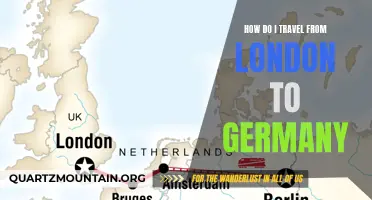
Journeying from London to Germany: Unveiling the Best Travel Options
- May 09, 2024

The Proper Measurement in Milliliters for Travel-Sized Mascara

Unlocking the Secrets: Understanding When Travel Prices Change

The Ultimate Guide to Solo Travel in Turkmenistan: Tips, Must-Visit Destinations, and Important Information
- May 08, 2024

How to Successfully Cash a Visa Travelers Check
- May 02, 2024
Winterville
London Bus Guide: How To Get Around London By Bus (Map, Fare & Weekly Bus Pass)
September 23, 2022
Winterville Staff
Adored by both locals and visitors, London’s vibrant red double-decker buses have continued to become an iconic symbol known around the world.
Its distinctive red color started in 1907 and has been the color of the city ever since. If you’d like to visit the city London-style, you have to ride the London Buses , one of the most inexpensive and convenient ways to travel around London.
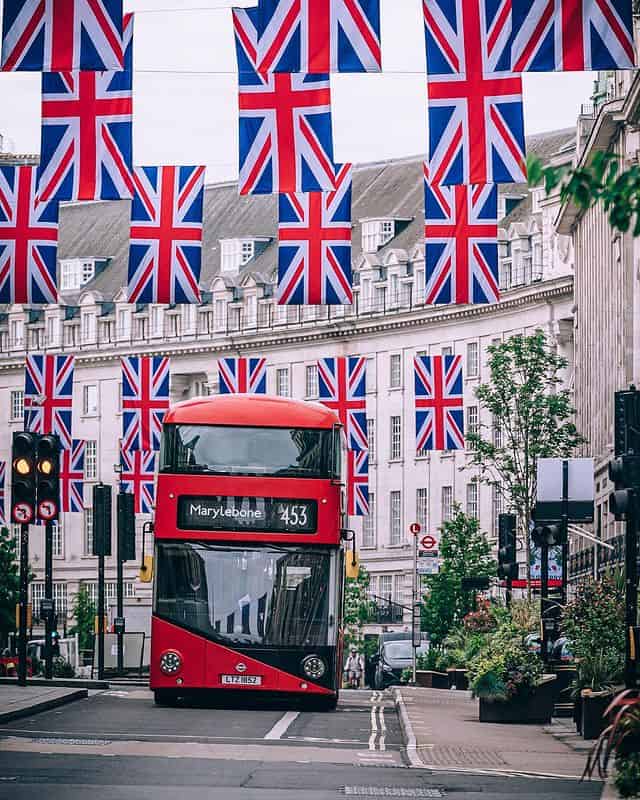
In fact, more than 2 billion passengers ride the bus every year. It is a top pick for tourists since it has an abundance of sightseeing opportunities en route to your destination.
Hop on to London’s wide network of buses of about 9,300 vehicles, covering 675 routes and 19,000 bus stops.
It serves the entire city with a 24-hour bus service, so you do not have to worry about the timings of your journey.
If you are unfamiliar with London buses, you are in luck as you have come across a detailed guide to help you ride a bus in the city .
Some other public transportation options you must know when travelling in London.
- London Underground
- London River Bus
- London Bike Rental
- London Trams
- London Overground
- London Cable Cars
- Driving in London
- Taxis in London
From how to use the bus to London bus routes and fares, read on to learn more about them.
- 1.1 Bus & Tram Pass
- 1.2 Oyster Card
- 1.3 Visitor Oyster Card
- 1.4 Travelcard
- 1.5 Contactless Card
- 2.1 Pay as you go Caps and Bus & Tram Passes
- 2.2 Oyster Card and Travelcard Adult Rates
- 3.1 London Bus Operators
- 4 London Bus Map
- 5 London Bus Times
- 6 How to Use London Bus
- 7 London Bus App
- 8 London Bus Trip Planner
- 9 Frequently Asked Questions
- 10 Ready to Hop on a London Bus?
How to Pay for Buses in London
If you are planning to commute by bus, remember that all buses in London only accept cashless payments.
With that said, you need a smartcard or ticket like a Bus & Tram Pass, Oyster card , Visitor Oyster Card, Travelcard , or Contactless Card to ride the London bus.
So before hopping on a bus, make sure to get one of the cards mentioned since you cannot purchase a ticket on the bus or pay by cash.
Bus & Tram Pass
A Bus & Tram Pass is just like a Travelcard that offers unlimited travel on buses and trams only. It comes in two types: Bus & Tram Pass season ticket and One Day Bus & Tram Pass.
Bus & Tram Pass season tickets can be used for a period of seven days, a month, or a year. If you are using the One Day Bus & Tram Pass, you can only use it from 00:01 to 04:30 the next morning.
Oyster Card
An Oyster Card is a type of contactless payment card that can be used on buses , Tube , trams , London Overground , Elizabeth line , DLR , River Bus , and most National Rail services.
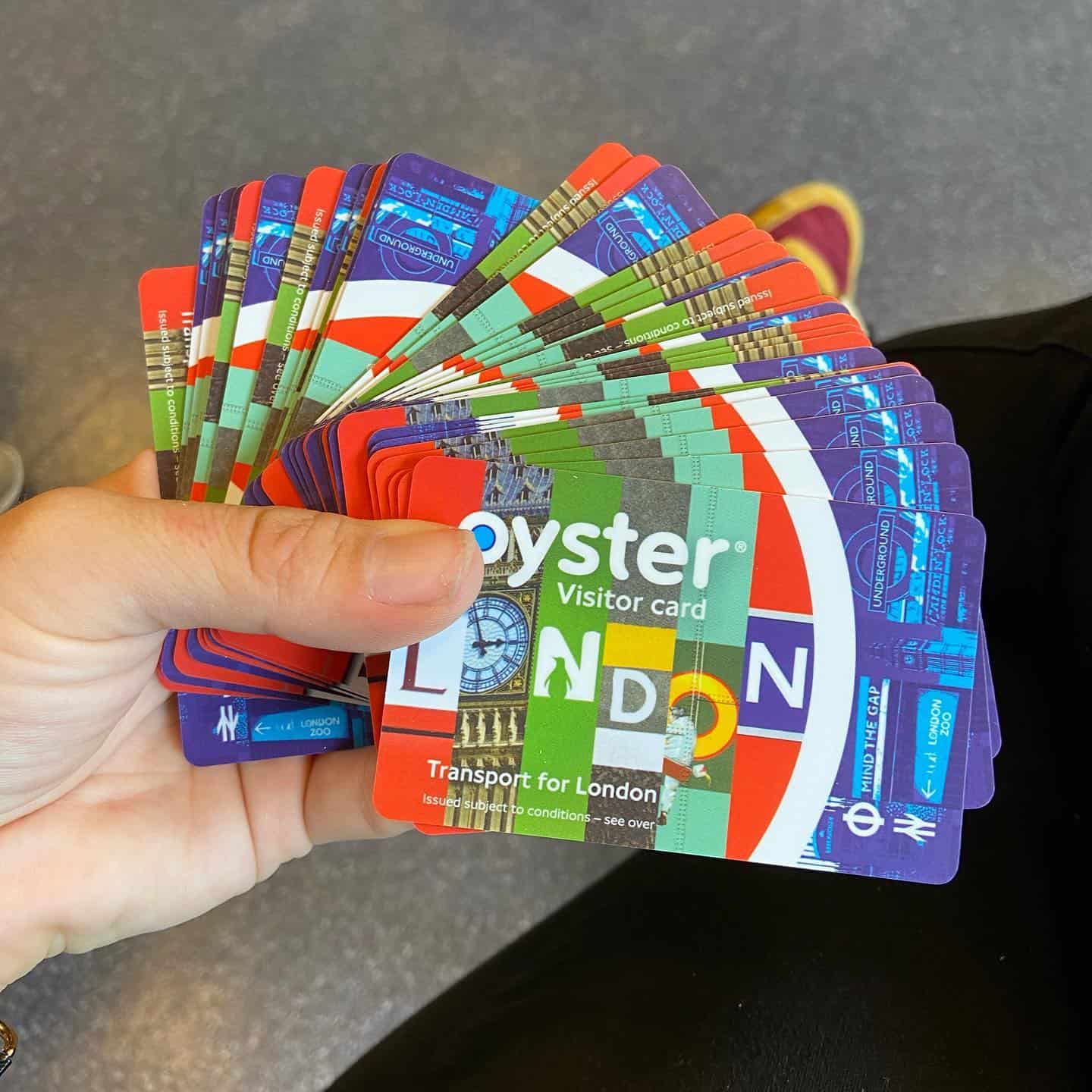
It is a pay-as-you-go card that only charges you every time you ride and can be topped up to add more credit if needed.
Use the TfL Oyster and contactless app to manage your Oyster Card account, check your balance, and recharge.
Check out this Complete Guide To Oyster Card to learn more.
Visitor Oyster Card
A Visitor Oyster Card is particularly made for tourists since it can only be purchased online when you are still outside London.
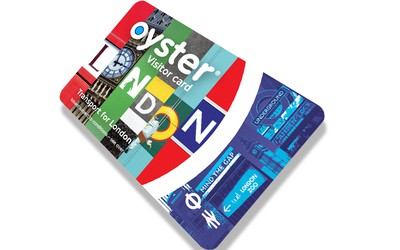
Similar to an Oyster Card , it is also a pay-as-you-go type of card and can be used in almost all types on buses, trams , Tube , DLR , London Overground , Elizabeth line , and most National Rail services in London.
Moreover, users can get special discounts on restaurants , stores , and Emirates Air Line cable cars .
You can purchase a Visitor Oyster Card through the Visitor Shop website , UK locations outside London , and your country .
If you’d like unlimited access to public transportation , you can pay for the bus fare using a Travelcard .
Ride as much as you want without the need to recharge for credit using Travelcard season tickets, Day Travelcard, or Group Day Travelcard.
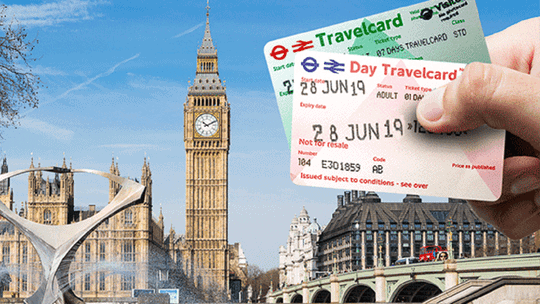
Travelcard season tickets come in three types: 7-Day Travelcards, Monthly Travelcards, and Annual Travelcards.
If you’d like to purchase a ticket for one day only, opt for the Day Travelcards, either Anytime Day or Off-peak Day Travelcards.
Check out this Complete Guide To Travelcard to learn more.
Contactless Card
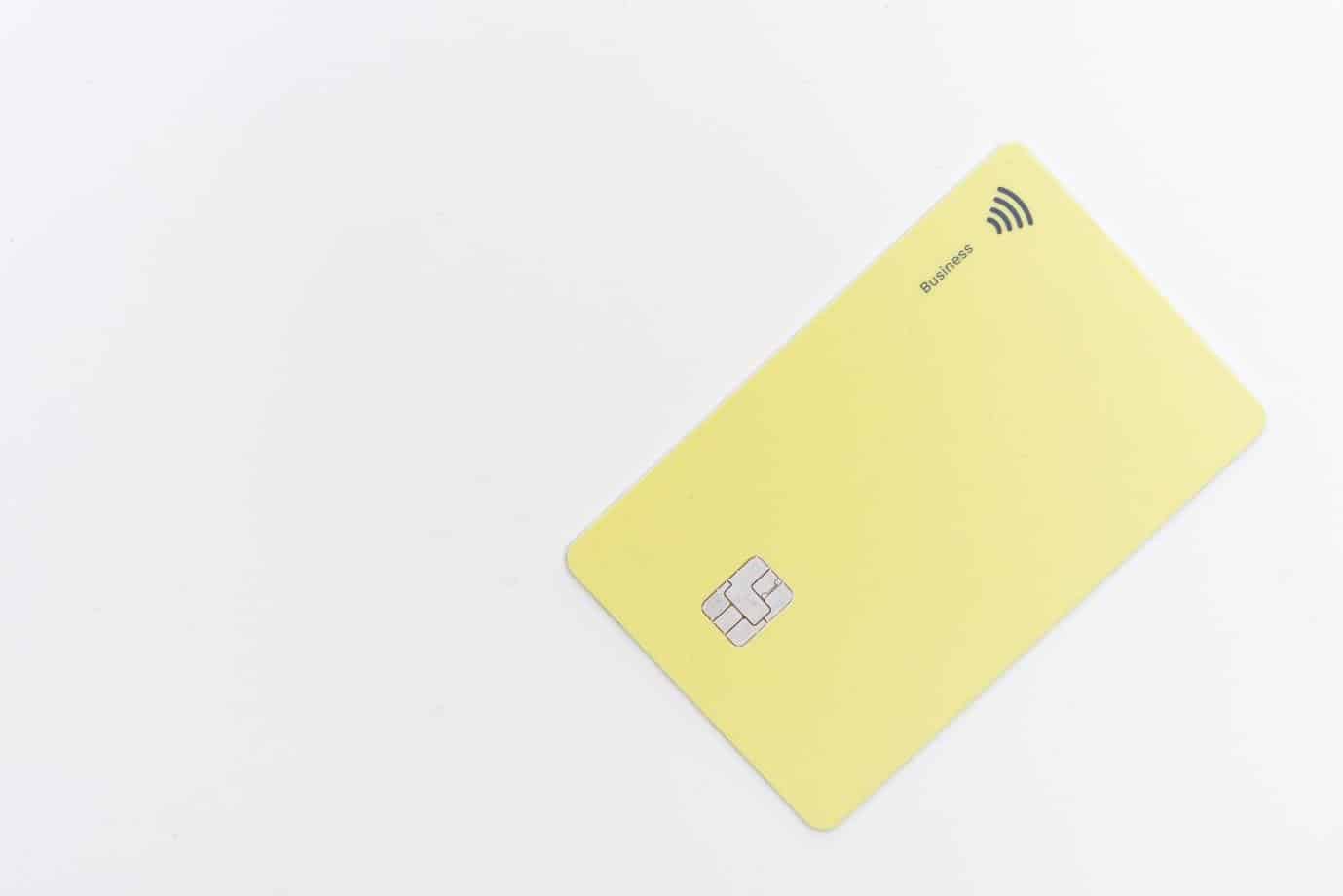
Unlike Oyster Cards and Travelcards that you have to purchase, a Contactless Card does not need to be purchased since you are using your own bank card as payment already.
If your bank card has a Contactless payment symbol, it means you can automatically use it to pay for your fare.
However, keep in mind not all bank cards are accepted in London. So before coming to London, check with your bank if your card can be used as a bus fare payment.
Don’t know which one to choose? I suggest reading Visitor Oyster Card Vs Oyster Card Vs Travel Card Vs Contactless Card to help you decide which card is best for you.
Check out this Complete Guide To Contactless Card to learn more.
London Bus Fares
If you’d like to pay for buses and trams only, there are different bus and tram fares offered, which are either charged with pay as you go or Bus & Tram Pass rates.
No matter how far or how many stations you travel by bus, the pay as you go rate remains the same and does not increase. You can travel as much as you want and pay a standard fare.
Pay as you go Caps and Bus & Tram Passes
(Bus and Tram only)
Oyster Card and Travelcard Adult Rates
(Including Bus , Tram , Tube, DLR , most Elizabeth line services, London Overground , Emirates Air Line , Thames Clippers River Bus services , and most National Rail services)
Should you decide to travel using all public transportation , you can opt for an all-in-one card such as an Oyster Card and Travelcard . Unlike the standard pay as you go rate when traveling by bus and tram only, the rates for Oyster Cards and Travelcards are different per Zone fare. Each Tube, train, or rail station has a specific Zone assigned to determine the correct fare.
The more Zones you wish to travel, the higher the rates. You can check which stations are covered per Zone using the Tube and Rail Maps of TfL . Rates are provided by Transport for London’s (TfL) Tube and Rail Fares .
To see the complete list of pay as you go caps and Travelcard prices for 5 to 10 years old, 11 to 15 years old, 16+ years old 18+ students, and Apprentice, check the Tube and rail fares .
London Bus Routes and Operators
TfL permits several London bus operators to conduct bus services in London. If you have any concerns with a ride, it is good to know which bus operator manages the bus so you know who to contact right away.
Check out the complete bus routes with table here .
London Bus Operators
London bus map.
With the help of TfL’s Bus Spider Maps, you can download a PDF map for each bus route to help you with your journey.
Type in a bus route or area and click “ Find Spider Maps “. Choose from the list of maps given and download the ones you need.
Alternatively, you can use TfL’s Bus Map to search for your bus route. Input a street or area in the search bar and click “Go”. The map shows all bus options near the location you searched.
Need a bus route map for Central London? Check out this key route map in Central London, ready to download at TfL.
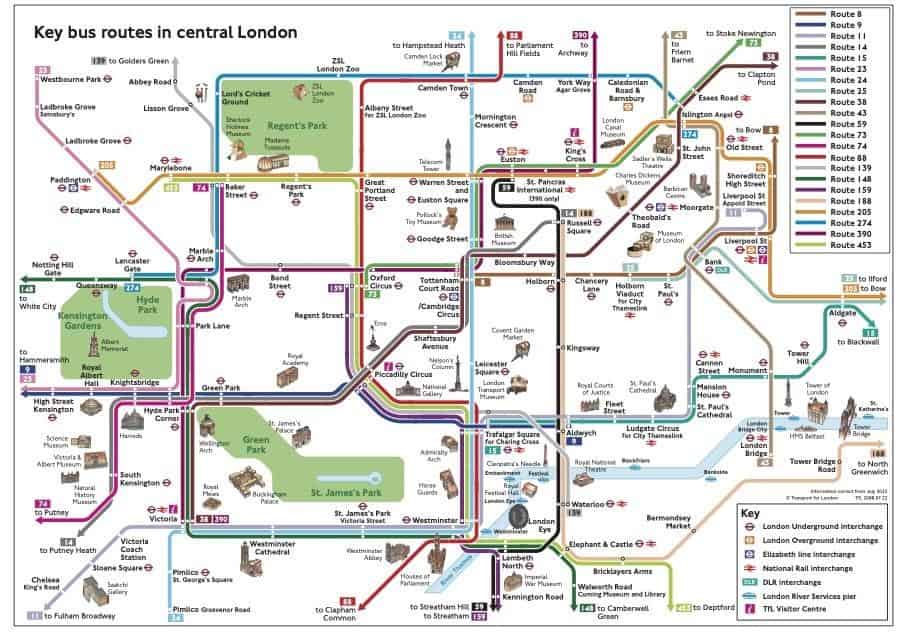
(Key Bus Routes in Central London provided by Transport for London )
London Bus Times
There are several ways to check live bus arrivals in London to keep you on track with your schedule.
You can check TfL’s live bus arrival times by clicking on a bus route. For example, click on Buses 1-50, and select any bus route from 1 to 50.
The page leads you to the list of stations for the route you chose. When you click on a bus stop, the page then shows the live arrival times, first and last services, timetable, and route details from weekdays and weekends. Check this example of a live arrival of route 1 Kingsway/Holborn Station .
Another way to receive live updates is by sending the bus stop code to 87287 or +44 7797 800 287 for international numbers.
You can also look at the Countdown Signs at the bus stop itself where it shows live arrival information.
Lastly, you may see live updates from a Digital Sign available in various places such as shopping centres , hospitals, and town halls.
How to Use London Bus
All bus stops have signs indicating the stop name. Once the bus arrives, allow passengers to alight first before entering the bus. Get on board through the front door of the bus and tap your card on the yellow card reader.
You only tap the yellow card reader once upon entering and you do not need to do it when you exit.
Once you are on the bus, find an available seat. Remember, priority seats are usually for pregnant women, PWDs, and the elderly.
To get off the bus, press the red “stop” button found on the metal posts when the next stop is your destination.
However, if you are riding a Hail and Ride service bus, you can get off anywhere and anytime since there are no designated stops for this type of bus. Read how to use buses in London to learn more.
London Bus App
To help you with your trip, download the TfL Go app , your all-around app to see maps and routes, live bus times, live status updates, walking and cycling routes, toilet locations, and many more.
The app is available to down on the AppStore for iOS or Google Play for Android devices. Its interactive maps allow you to zoom in and out, find a bus stop, and check the next bus arrival update.
On top of that, you can plan your journey in a step-free mode. Once you select step-free mode, you’ll be passing areas that are all wheelchair friendly. The app finds step-free areas in trains and platforms.
London Bus Trip Planner
Use TfL’s Plan a Journey tool to help you travel from point A to point B. Just type in where you are coming from and where you are going. Moreover, you can select your planned departure time so the tool shows which buses are available.
After inputting the details, the tool shows all the available public transportation options , from buses to Tube .
It also gives you an estimated travel time for each station and its total. If you need more help in planning, take a look at TfL’s travel tools .
Frequently Asked Questions
How many buses in London are there?
According to TfL, they manage approximately 9,300 buses operating on 675 routes, 50 bus stations, and over 19,000 bus stops.
Can I use my bus pass in London?
If you are using the Bus & Tram Pass, you can use it to ride buses in London. Use it on the day of your pass until 4:30 in the morning after the expiration date.
You can get a Bus & Tram pass in several locations such as ticket machines at stations, online with your contactless and Oyster account , TfL Oyster and contactless app , Oyster Ticket Stops , and Visitor Centres .
What happens if I don’t have enough credit to pay for a bus fare?
Even if you don’t have enough credit on your card, you can still ride the bus one more time. The balance on your card becomes negative, so make sure to top again to pay for the negative balance and have enough credit to ride the next bus.
Is there a Bus Fare Calculator in London?
There isn’t really a bus fare calculator since you pay a Hopper Fare costing £1.65, which is a London single bus fare. It allows you to travel anywhere, no matter how many stops within one hour of use.
You can always check the bus fare costs given by TfL.
Ready to Hop on a London Bus?
Now that you know about bus fares, routes, tickets, and how to ride, you are now ready to see London like a local. Before traveling, it is advisable to read TfL’s guidance on safer travel in London .
Moreover, you can also get some insight on bus and coach passenger rights .
Have you ever ridden a London bus before? Help a fellow traveler and share your experience by commenting in the comments section below. If you have any tips and advice, we’d love to know them too here!
You May Also Love From Winterville.co.uk

7 Top Shooting Ranges in London for Gun Enthusiasts (Updated 2023)
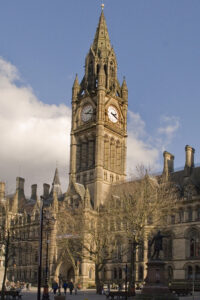
Uncovering The Best Places To Live In Manchester Uk | Where Are Safest And Dangerous Areas In Manchester?

Find the Best Place to Live in Birmingham UK | Dangerous Areas and Safe Areas In Birmingham, Schools, Job Opportunities, and More!
Leave a Comment Cancel reply
Save my name, email, and website in this browser for the next time I comment.
Getting Around London: Guide to Public Transportation
Thanks to its ease and accessibility, London might just have one of the best public transportation systems in the world. Run by Transport for London , the city's mass rapid transit lines and buses allow locals and visitors alike to get around the city without needing a car.
Before arriving in London, download an app called Citymapper . It recommends the best methods of transportation for any desired destination, and even gives you specific bus stops so you don't get lost. Once you have the app, you can start navigating the city like a local.
How to Ride the Underground
London's metro system is called the London Underground, or the Tube. There are eleven Tube lines in total, which connect most areas of the city and are particularly handy in central London. It's a quick and easy way to get around with simple-to-understand transfers.
- Fares: Fares vary based on the distance and time of day. The fare is typically determined by zone, so a traveler using the Tube within Zone 1 will pay less than one traveling from Zone 1 to Zone 5. A single journey within Zones 1 and 2 is 4.90 pounds. TfL also offers one-day and seven-day travel cards for unlimited travel within a specific period. Tickets and travel cards can be purchased from automated machines within all Tube stations using cash or a credit card.
- Oyster Cards: Purchase an Oyster Card to take advantage of lower fares. The plastic card can be filled with any amount of money and allows travelers to tap in and out of Tube stations and buses. A Tube journey within Zones 1 and 2 using an Oyster Card is 2.40 pounds. Oyster Cards also have a daily cap of 8.50 pounds within Zones 1-3, so you can travel unlimited on any TfL Tube or bus once you've paid that amount. Oyster Cards are available for a five-pound deposit at ticketing machines in all Tube stations. Contactless credit and debit cards can also be used in lieu of an Oyster Card to tap in and out of stations for the same fares.
- Routes and Hours: The Tube generally runs from 5 a.m. until midnight, with specific opening and closing times varying by station. On Fridays and Saturdays, five of the Tube lines run on the Night Tube , which extends for 24 hours. These include the Victoria, Central, Jubilee, Northern, and Piccadilly lines, but do not include all stops on each line. Look for the specific Night Tube maps when planning your journey.
- Navigation: Getting around the Tube is fairly simple. Each station displays signs indicating which direction to take each Tube line, so travelers can check they are going the correct way to their intended stop. Signs on each platform also display how long you'll need to wait until the next Tube train arrives, as well as its destination. For extra help, use TfL's "Plan a Journey" service online.
- Service Alerts: Check the official TfL website for current service alerts or delays on the Tube, which can be affected by weather or construction. It’s also advisable to check for upcoming planned Tube strikes, which can result in entire lines being shut down for a day or more.
- Accessibility: Some—but not all—Tube stations offer step-free access, so it’s important to check your route in advance if you need wheelchair-accessible options. The Tube map displays which stations offer these, and there is a specific step-free Tube map available on the TfL website. The Tube trains also feature priority seats near the doors for those who need them.
How to Ride the Buses
The London bus system is extensive, with some buses traveling to destinations that the Tube stations don't reach. It's important to consider the traffic when opting to take the bus since rush hour can mean long delays.
- Routes and Hours: There are over 600 total bus routes around London, with many serving central London. Bus routes that run 24 hours are indicated by a "Night Bus" sign. Determining the best bus can be complicated, especially when looking at a route map, so use Citymapper or TfL's "Plan a Journey" to help decide which is best for your travels.
- Fares: The London bus is a cheaper option than the Tube since one adult ticket is 1.50 pounds. Buses don't accept cash, so be prepared with an Oyster Card or contactless payment card before boarding. TfL also offers the "Hopper Fare," which allows travelers to transfer from one bus to another within an hour for free.
- Transfers: When switching between the bus and the Tube, travelers will need to pay each fare as there are no free transfers between the two. Having an Oyster Card can be useful if you plan to go on several TfL journeys each day because of the daily cap in Zones 1 and 2.
How to Ride the Overground
The London Overground is an extension of the Underground, with above-ground trains running to areas of the city the Tube doesn't reach. There are nine total Overground lines.
- Hours: The Overground has similar hours to the Tube, with each station operating a specific first and last train time. On Fridays and Saturdays the Overground operates 24 hours on stops between New Cross Gate and Highbury & Islington.
- Fares: The Overground has similar fares to the Underground, although the Overground can be cheaper when outside central London. A single journey within Zone 1 is 2.40 pounds and from Zones 2-6 varies from 2.90 to 5.10 pounds. It's best to use an Oyster Card to tap in and out of the stations.
Using Taxis and Ride Sharing Apps
London's black cabs are iconic, particularly since the taxi drivers are deeply knowledgable about the city's geography. The official cabs can be expensive, especially when traveling long distances, so visitors may want to consider using Uber or similar ride share options. Lyft doesn't operate in London, but Addison Lee is a similar app that's popular with Londoners. To use the black cabs, look for taxi stands around the city, or raise your arm to hail one in a safe place.
Getting to and from the Airport
London has several airports, but most international travelers will arrive into Heathrow or Gatwick, both of which are accessible by public transportation. Heathrow, the city's biggest airport, connects to the Underground via the Piccadilly line, so travelers can opt to take the Tube all the way into the city. The airport also offers the Heathrow Express, a train that connects the airport to Paddington Station in only 15 minutes. Purchase tickets for the Heathrow Express in advance online to take advantage of cheaper fares. Gatwick has a similar train, the Gatwick Express, which brings visitors into Victoria Station in about 30 minutes.
Other Transportation Options
Because London is located along the Thames, there are numerous ferry boats that operate along the river. The Thames Clippers are one of the most popular options as travelers can use their Oyster Cards to travel to stops along each side of the river. Those heading to London's art museums can hop on the Tate To Tate Clipper, which connects the Tate Modern and the Tate Britain every 30 minutes.
Leaving the City
Major train lines connect London to all parts of the U.K. via several train stations, including Paddington Station, London Bridge Station, and Victoria Station. Use the Trainline website to search for the best train to your chosen destination when heading out of London. Most train lines will require specific tickets, which can be purchased online ahead of time or in the train stations. For those going to Paris, Brussels, or Amsterdam, the Eurostar operates out of St. Pancras International, which can be accessed by the Tube at Kings Cross.
Sightseeing on the Number 11 London Bus
Avoiding Peak Times on the Tube in London
London Travel: Which Oyster Card is Best for Visitors?
How to Travel from London to London City Airport by Underground and Taxi
Tips on Traveling from Heathrow Airport to Central London
A Guide to Airports in London
Heathrow Airport Guide
How to Get From Heathrow to Gatwick: The Complete Guide
Your Trip to England: The Complete Guide
Getting Around Salt Lake City: Guide to Public Transportation
How to Enjoy a Quick Layover in London on a Budget
Getting Around Beijing: Guide to Public Transportation
Getting Around Paris: Guide to Public Transportation
Getting Around Madrid: Guide to Public Transportation
Getting Around Frankfurt: Guide to Public Transportation
Getting Around Pittsburgh: Guide to Public Transportation

How to Use London Buses: the Easy Guide for Visitors (2024)
This post contains affiliate links for which I may make a small commission to help keep the site running. You will not be charged extra for these items had you not clicked the links. Thank you for your help to keep the site running!
If you’re wondering how to use London buses or hoping for some expert tips, you’ve come to the right place!
There are two main thoughts that go through most visitor’s minds surrounding London buses.
The first is: oh my God, they actually are double decker! This is real life! This isn’t just in the movies or for tourists!
The second is: but how do I get on one without getting lost?
People are usually more hesitant to use a London bus than to hop on the London Underground.
I think this comes down to our natural hesitation when exploring a new city.

With the tube, it’s much easier to navigate your way back somewhere if you get lost, because you can’t get TOO lost.
If you end up at a stop you didn’t expect, you get off, don’t exit the station, look at the tube map or ask a member of staff, and then get back on in the right direction.
With a bus, it feels much more intimidating, because what if you get on one going in the wrong direction in the middle of nowhere with no idea how to orient yourself, or your phone dies so you don’t have a map anymore.
The list goes on.
But I’m here to explain how to use the London bus system and break it down for you so you can feel totally confident exploring by bus (in fact, I recommend it as it’s a better way to see the city than always being underground!)
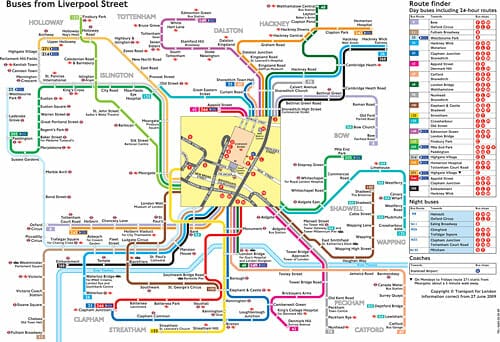
GET A FREE LONDON INTRO GUIDE and ACCESS TO MY FB GROUP
Start your planning with this “Intro to London” guide and access to my London planning Facebook group!
I consent to receive this book and other e-mails from Girl Gone London
Oyster Card
Do kids go free on london buses.
Hey! Want more honest UK tips and planning advice? Click here to join my London and UK Travel Tips Facebook group , where I can answer more of your questions!
Check out the YouTube channel for more London tips
Using Buses in London: How to Pay for London Buses
Paying for London buses can only happen two ways, as London buses do not take cash .

🛎 Still looking for somewhere to stay in London?
My favorite hotel in London for all visitors is the Strand Palace ( click here to check prices ). ⭐⭐⭐⭐
Contactless Debit or Credit Card

If you have a credit or debit card that is contactless, ie, you don’t need to use a PIN for it and can instead just “tap” it, then you can use this to pay on a London bus.
However, each person would need their own card – you can’t use a single contactless credit card to pay for multiple journeys at one time on a London bus.
IMPORTANT: are you coming to the UK from abroad?
In case you’re reading this from outside the UK and will be a foreign visitor here, you need to know these 2 things to stay safe and save money.
- Travel insurance – you need it when going overseas! I use this site to get the best quotes and purchase my packages from. Do not skip this – having medical coverage abroad as well as other coverage in case of missed flights, lost luggage, etc is essential. As I said, I have never gone wrong using this site .
- International debit cards without fees – do not get stuck paying extortionate foreign fees when using your card abroad (and the UK is almost all card these days). I use the Wise debit and travel card which you can apply and learn more about here .
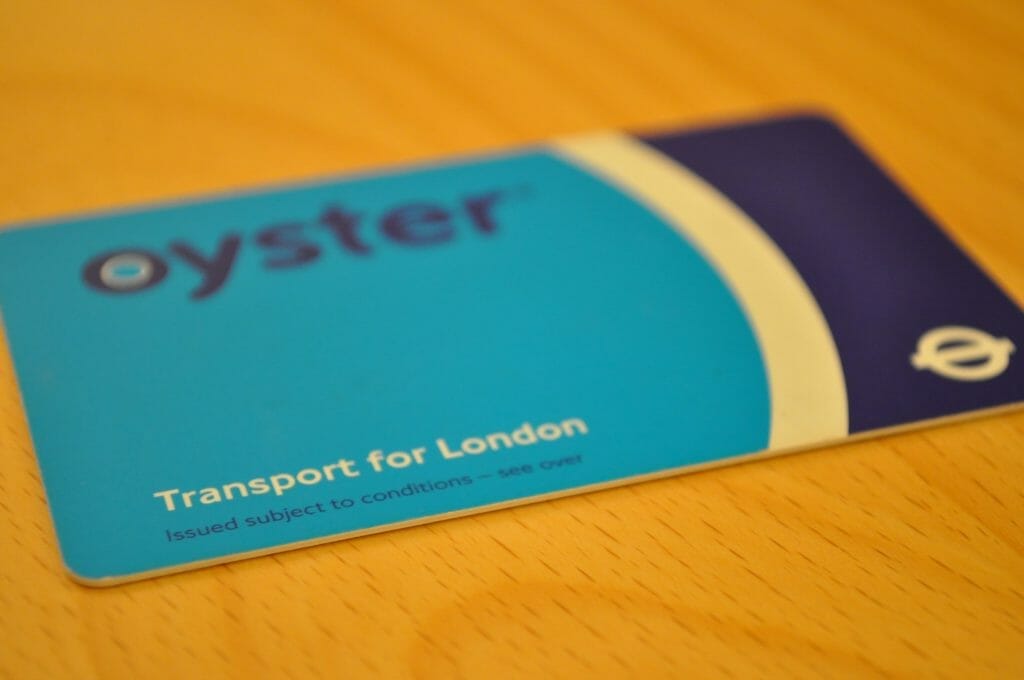
The second way to pay for a London bus is by using an Oyster card (more on Oyster cards here ).
There will not usually be any sort of way to buy an Oyster card near the bus station unless it just happens to be near a tube station, so make sure you’re prepared before planning on taking the bus.

How Much Do London Bus Rides Cost?
Let’s talk prices of London buses , as London buses are cheaper than the tube and definitely worth your while if you’re trying to save a pence or two!
Single Ride Cost on London Bus
A single ride on a London bus costs £1.65, regardless of what Zone of London you are in.
However, if you take another ride within an hour of getting on the first bus (maybe you have to change buses), then you’d be eligible for the Hopper Fare which I’ll explain next.
If you take different bus journeys spaced further than an hour apart, you would pay £1.65 per each journey, until you reach the maximum daily cap (keep reading for more information on that).
Hopper Fare
The London bus Hopper Fare is automatically applied to your journey if you qualify, and to qualify, you need to tap in on another bus (or buses) within 1 hour of tapping in on the first one.
The Hopper Fare means that you still only pay £1.65 total, no matter how many buses you take within a one hour period.
All-Day Limit
If you take multiple buses within a day, spread out at different times, you will be charged the £1.65 per ride until you get to a total of £4.95 in one day.
You need to use the same contactless card or Oyster card to achieve this limit, as obviously the bus system will not know it’s still you if you use your Oyster card for one journey and then your contactless credit card for the next.
After you hit that limit, any additional bus rides that day will be free of charge within London.
Children ages 10 and under can ride with you on a London bus for free.
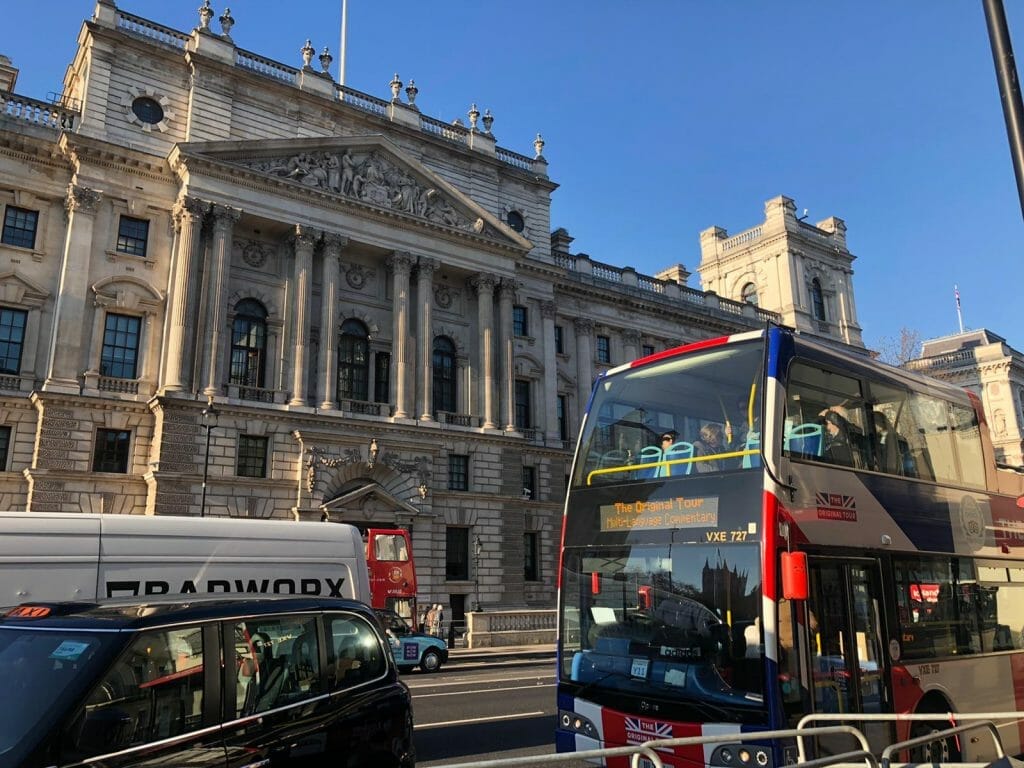
How to Get On and Get Off a London Bus

Okay, you probably know how to get on a bus: you step-on, but let’s talk about London bus etiquette and practicalities.
When you first get on the bus, get on at the front of the bus.
Both doors may open, but it’s more customary for people to exit via the back door and enter via the front door, near the driver.
There are some buses where you can also enter from the back, so if you see a lot of people doing this, then follow suit, but otherwise stick to the front.
Get on, tap your card onto the reader, and once it signals that you’re good (it will make a long beep), you can proceed onto the bus to find a seat.
You can sit upstairs or downstairs, or you may have to stand, but etiquette is, if standing room only on a bus in London, to move further back into the bus as more people will cram on along the route.
Also keep in mind if you choose to sit upstairs, that the bus may start in motion again while you’re navigating the stairs so HOLD ON TIGHT.
Most buses will have scrolling screens to tell you the next stop.
In this case, it will be easy to know when to get off.
If your bus doesn’t have that, you can try staying near the driver to see if he can alert you when you’re close or you can follow your route on bus apps using your phone (click here to learn how to use your phone in the UK from abroad ).
Requesting a Stop on a London Bus
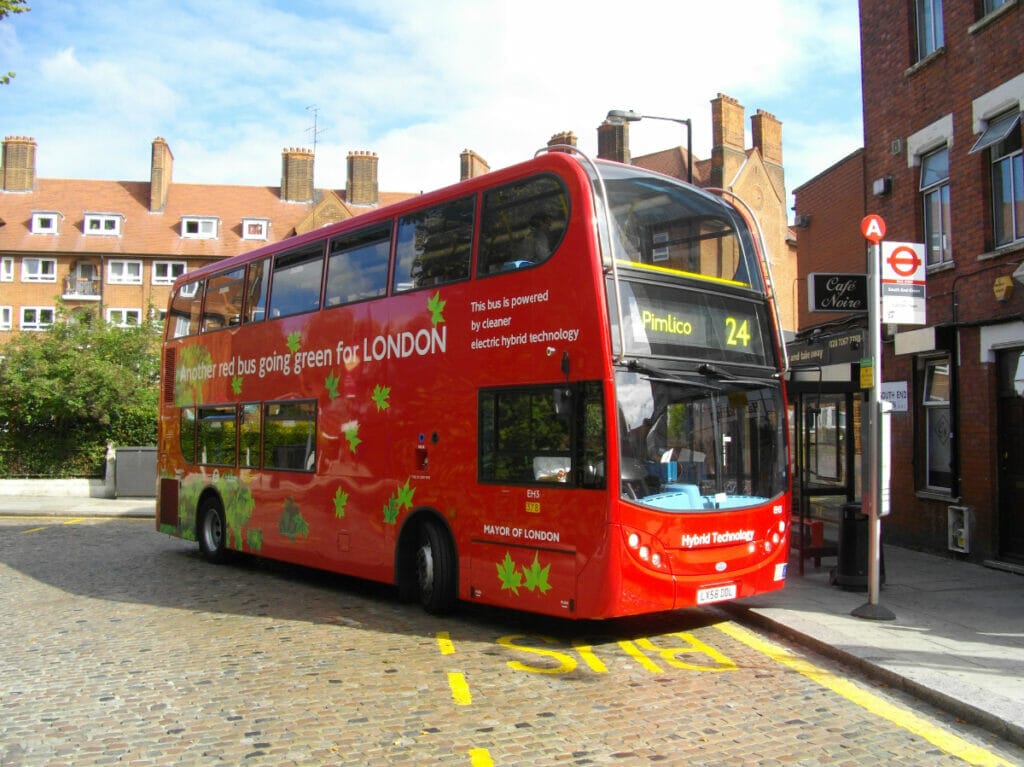
If you’re on a busy route, it’s commonplace for the bus to already be stopping at all stops, but to be sure, make sure to push the “Request stop” button (found all over the bus, usually on the rails) before your stop so the driver knows someone wants to get off.
When you get off the bus, you DO NOT need to “tap out” like you do on the tube.
Simply walk off (from the back exit).
Flagging a Bus in London
Do you have to hail buses in London?
Yes, sometimes!
It’s important to “hail” the bus if you are intending to get on it, if there aren’t already people doing that or it doesn’t seem to already be stopping.
Simply step relatively close to the road, put your hand out, and try and make eye contact with the driver to signal that you intend to get on his bus, as there are multiple buses that will go through a stop so if you’re waiting for another one, they don’t want to waste their time stopping only for you to not get on.
If you get nervous about the above “hailing” or “requesting stop” etiquette, know that the vast majority of buses you’ll take as a visitor in Central London won’t have this needed from you as they’ll be stopping anyway, but it’s good to know.
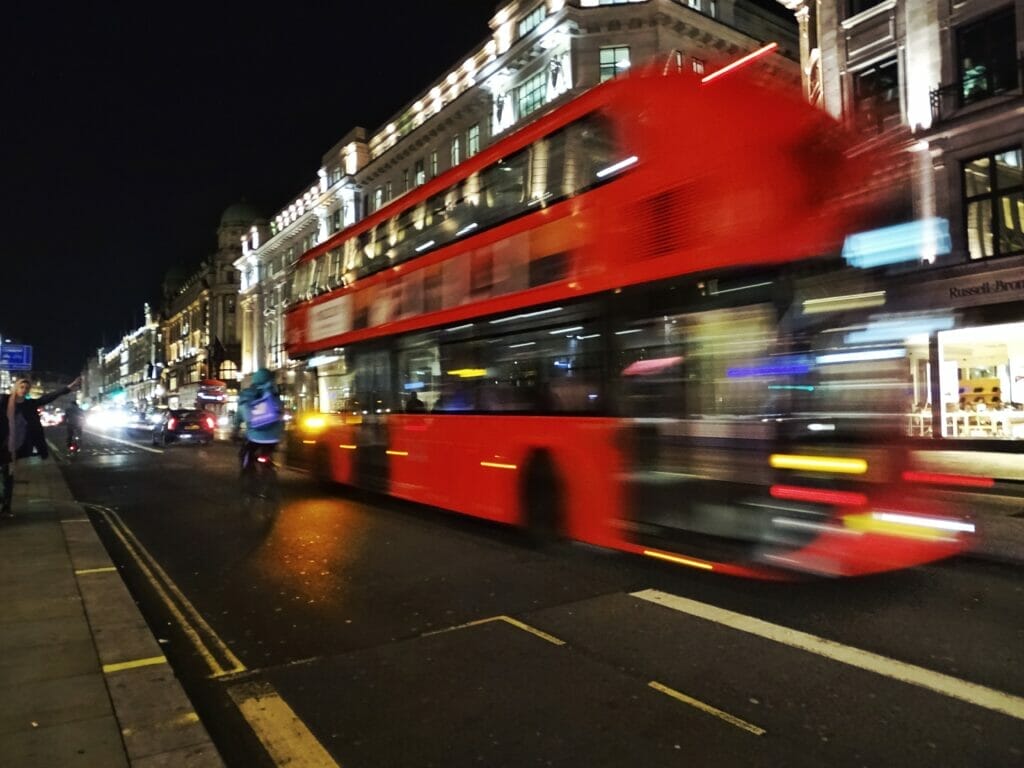
Where Can You Sit on a London Bus?
Once on the bus, you are free to sit wherever you want, whether upstairs or downstairs (go for the upstairs on a double decker bus for the experience!).
However, if you are sitting in a seat designated for people with mobility issues or extra needs (there will be a sign), make sure that you look around each time people get on the bus to make sure no one needs the seat more than you.
You can still sit there if no one is sitting there and falls into that category, however.
Standing on a London Bus
If there are no seats (and there might not be during rush hour), London bus etiquette is that you can stand on on the lower level of a London bus.
Just make sure to hold onto the handrails so as not to go flying down the aisle when the bus is moving, and stay clear of the yellow line at the front of the bus that designates that people should not stand there (typically right in front of the front door and next to the driver).
Understanding London Bus Stops

London bus stops are all marked with letters (sometimes double letters).
You’ll find the letter displayed on top of the bus stop or station, and this is helpful to know as you’ll need it to figure out where your bus might be departing from.
Most bus stops will also have a screen showing you when the next buses are due to arrive and where they’re going, as well as maps and schedules posted on signage around the stop.

Understanding London Bus Routes

The bus map of London looks really scary to a visitor, but most people don’t use the bus map like they would use a tube map, as it’s too convuluted.
Instead, let’s talk about individual routes.
Each route has a number attached to it, so, for instance, the “55”, and this will run two ways.
There will be a 55 bus going in one direction on the route, and another going the opposite direction.
They are on the same bus route, but if you get on one going in the opposite direction, you’ll add a lot of time and confusion to your day.
The good part is that you’ll avoid having this problem as long as you make sure the bus stop you need matches the letter on the top of your bus stop, because that means the 55 bus that goes in the opposite direction will be going from a stop on the other side of the street (that you are not at, so you can’t get on it!)
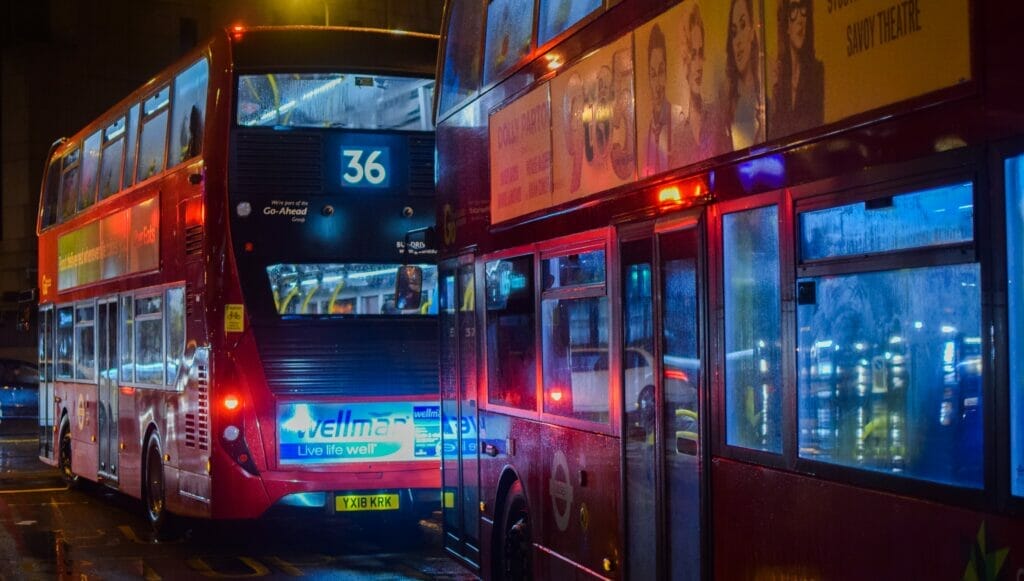
Step-by-Step Guide to Take a London Bus
Let’s talk about how this works step-by-step.
I’ll have some resources below on some great bus schedule apps, but I usually just use Google directions, set to public transportation.
Let’s say I look up how to get from the British Museum to Oxford Circus Station, and I see this.

On the bus section, you’ll see it wants me to take the 55 bus from Museum Street to Great Titchfield Street. Museum Street is Stop C, so as I walk in the direction it tells me, I’m looking for a bus stop that says “C” on top.
I might find more bus stops ON Museum Street, but I want Stop C specifically.
At Stop C, I’ll keep an eye out for when a bus that says “55 Towards Oxford Circus” on front arrives.
If it only says “55,” I’ll ask the driver, just to be sure, ” is this the bus that stops at Great Titchfield Street”?
Then, on the bus, I’ll keep an eye out for the scrolling screen telling me that the next stop is Great Titchfield Street (it won’t say the letter on the bus stop), and when it’s my stop, I’ll press the button, get off when the bus stops without “tapping out,” and wallah!
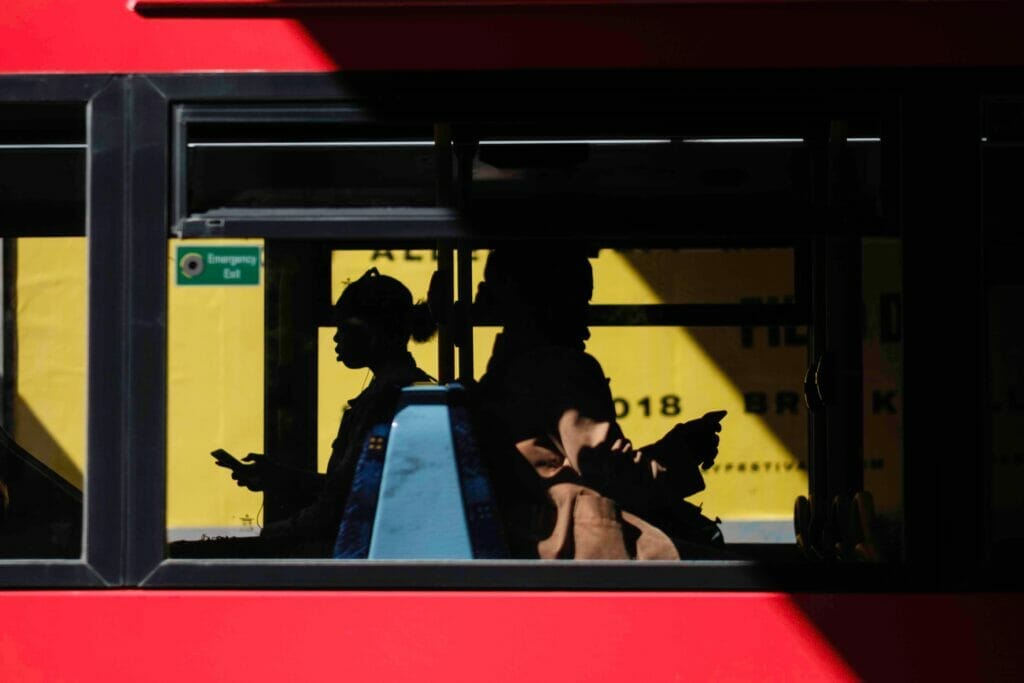
Do London Buses Run at Night?
Some London buses are 24 hours, or only run at night called “night buses.”
These will follow the same types of rules as other buses, including route numbers.
Accessibility on London Buses

London buses are designed to be able to accommodate those with accessibility limitations, including being able to get down to street level so a wheelchair or mobility impaired person can get on much easier.
There is also wheelchair space in the middle of the bus, which everyone else will clear out of if you get on with a wheelchair or scooter and need that section.
Resources and Apps for London Bus Schedules
Nowadays, almost everyone, including Londoners, is getting bus information off of their phones rather than looking at a paper map.
I often use Google Maps, set to “Public Transportation,” or I recommend an app called CityMapper, which is one of the best apps to download for London.
Want more London travel guides? Check these out!
- The Definitive London Packing List for Visitors
- A Full Guide to Oyster Cards in London for Dummies
- Getting around London: Everything a Visitor Needs to Know
- Weather in London: a Visitor’s Guide
- The Best Time to Visit London: a Local’s Guide
- London on a Budget: How to Save Money in London
- Money in the UK: How to Pay for Things in London
- Exactly How Many Days to Spend in London: an Expert Guide
- How to Use the Tube in London: a Guide for Newbies
- What to Wear in London (How to Dress Like a Londoner)
- British Pub Etiquette: the must-read guide
- 49+ Expert London Travel Tips
- Visiting London with Anxiety: the ultimate guide
UK Travel Planning Guide: the FAQs
🏥 Should I buy UK travel insurance?
Absolutely yes. Basic coverage is not expensive, and as a visitor you are NOT covered under the NHS. Compare policies and prices with Travel Insurance Master here , a big name in the travel insurance business, and cross that off your list.
🔌 Do I need travel adapters for the UK?
Yes, you do, otherwise you won’t be able to plug in your electronics/phone/lifelines. I recommend this one , which is all-in-one so you can use it in other countries.
🚗 What do I need to drive in the UK?
The first thing you need to check out if you’re planning on renting a car in the UK is this guide to driving in the UK for visitors – the roads, signs, and driving experience will likely not be what you’re used to and it’s essential to prepare yourself to stay safe and aware.
🛌 What’s the best way to book hotels in the UK?
For UK hotels, Booking is the best site as it offers free cancellation on many properties. If you want an apartment, I always recommend VRBO over AirBnb.
📳 Will my phone work in the UK?
Yes – if you set it up right. Check out my guide on making your foreign phone work in the UK to ensure that you get the type of service you need.
🚿 Can I drink the water in the UK?
Yes, UK water is great and perfectly safe. But drink out of taps in any kitchen or use water fountains. Double check before drinking out of the taps in hotel bathrooms, though, as they may be on a different system. London water is safe to drink .
1 thought on “How to Use London Buses: the Easy Guide for Visitors (2024)”
I just returned from London and I thought the bus system was very complicated to pickup in the few days I was there but I have to say Londoners were always very generous with time and explanations if asked. It probably didn’t help that there were plenty of diversions going on because of the queue when the Queen died. The only way we knew we were being diverted was when we saw signs that said “diversion” and the bus turned that way. My general impression is that the transportation service assumed that passengers just “knew” stuff. Your explanations were quite helpful but a little late for us. I will be following since I would like to return sometime! Keep the info coming. Your site did help us with figuring out some of the places we didn’t want to go- especially when time is limited.
Leave a Comment Cancel Reply
Your email address will not be published. Required fields are marked *
This site uses Akismet to reduce spam. Learn how your comment data is processed .
This website uses cookies to improve your browsing experience and analyze the use of the website. Learn More

How to Use Buses in London

This post is a guide to riding the buses in London, including how to pay your fare and other helpful planning tips.
Bus travel in London is well worth considering during your travels in the city.
The buses are easy to take and run 24 hours a day.
- Ease of Use
- Payment Options
- Planning Your Trip
- Tips for Riding the Bus
The London bus network covers the entirety of the city too and gets you to places the tube might not reach.
And of course, you get a great view of this gorgeous city as you pass by many of the most well-known sights in London.
In fact, if you decide to do this, we have a self-guided bus tour that takes you past major icons like Westminster Abbey, Trafalgar Square, Covent Garden, and more.
EASE OF USE
Although there is a lot of information on this page, know that once your decisions are made about how you want to pay for your fare, the rest is rather easy.
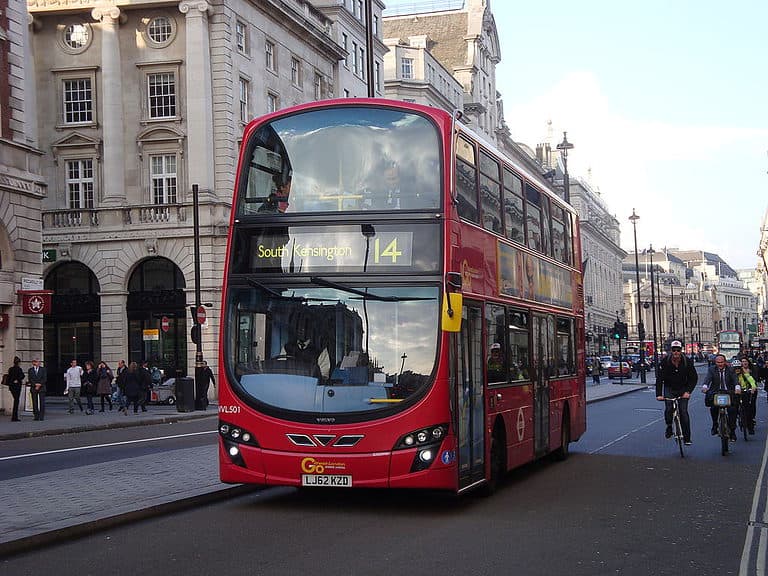
There are apps to help you with your route planning, and we’ve listed some travel helpful tips below.
Within only a few trips you’ll be an old hand at traveling by bus throughout London.
HOW TO PAY FOR YOUR FARE
You can pay for a bus ride by using a contactless card , a Visitor Oyster card , an Oyster Card , or a Travelcard .
You can’t pay for a bus ride with cash.
Contactless Cards
These are credit or debit cards (or devices) that can be tapped on a reader inside the bus to pay for a trip. On buses, you tap as soon as you board and there is no need to tap again as you alight.
Your bank card needs to show this symbol on it to tell whether it can make a contactless payment:
Credit or debit cards from outside the UK that sometimes allow contactless purchases are the AMEX (American Express), Mastercard, Maestro, Visa, and V Pay cards.
Note that it’s best to look into whether your bank will charge a transaction fee if you use this method.
Contactless cards are subject to the same price capping as an Oyster Card, so you never pay more than you would have spent had you purchased a daily travel card.
You are also able to take advantage of the 'Hopper' fare.
However, you won't get the same concessions available with the Visitor Oyster Card.
Oyster Cards
An Oyster Card is a plastic smart card, which is used to store money for rides throughout the London public transport system.
It also gives the holder *concessions on some attractions, restaurants, entertainment venues, and more.
There are two kinds of cards, the Visitor Oyster Card and the regular Oyster Card , both of which function fairly similarly.
Each is a pay-as-you-go pass, meaning your card is charged each time you make a trip, depending on the zone (there are 9 of them) and whether it is peak or off-peak time.
It also caps the fares on trips taken within a single day, making the cost cheaper than single-ticket purchases.
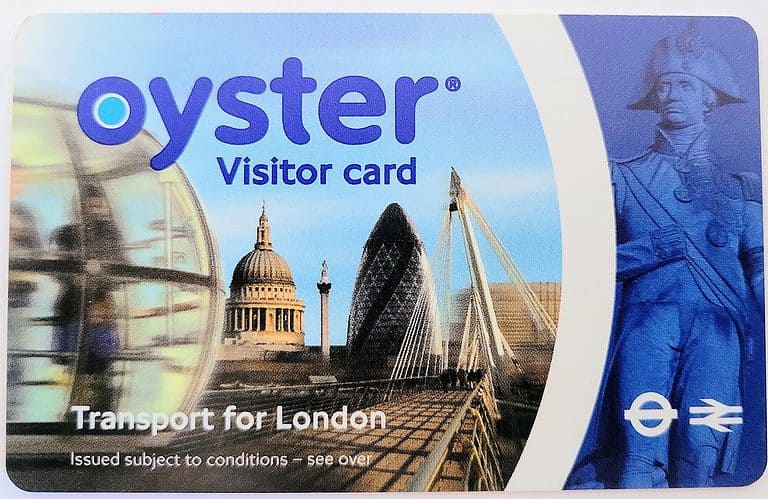
Both cards cover rides on buses, trams, the London Underground (Tube), DLR, London Overground, TFL Rail, most National Rail services in London, Emirates Air Line cable car, and River Bus services (MBNA Thames Clippers).
Each rider needs their own card, meaning a family cannot share a single card.
As far as costs go, there is a cost to buy the card itself, currently £7.00, in addition to the cost of whatever you put on the card.
But the card never expires, and you can top it up whenever you want to or need to.
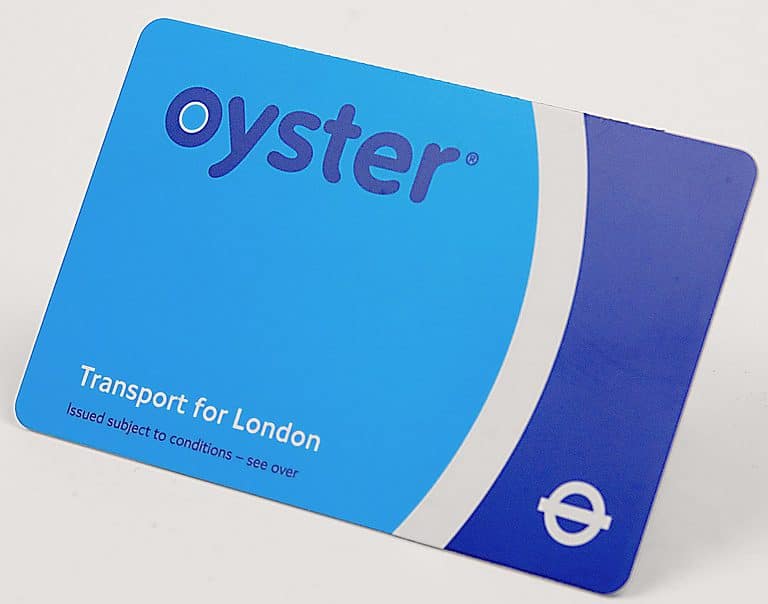
Speaking of topping it up, the card can be filled on an app, at over 4,000 local shops called Oyster Ticket Stops, at visitor Centres, at kiosks in tube stations, and many other places.
And for those who want to have the Oyster card on hand when they land at the airport, the Visitor Oyster Card can be purchased online and shipped to you ahead of time.
* None of the deals are that spectacular and you generally get much better concessions with a tourist attraction concession pass . The TurboPass, one of the tourist concession passes, includes a Visitor Oyster Card for free.
Travelcards are prepaid cards that give you unlimited access to specific zones within London.
Buses don't operate in "zones" and therefore any type of Travelcard will work on them.
However, if you are also taking other forms of transport, like the Tube, this might be of more use to you.
You can choose to either order these in advance (in which case you will be given a paper Travelcard) or you can buy them upon arrival (in which case you will be using a plastic Oyster Card with the travelcard loaded onto it).

There are many different lengths of Travelcards, but the most pertinent to visitors is the 1-Day Travelcard.
(There's also a 1 Month and 1-year ("annual") travelcard)
There's little reason you would ever need the 1-Day Travelcard as there is already a cap on Oyster Cards that limits the amount you can be charged per day.
In fact, you will likely lose money if you choose the 1-Day Travelcard over a regular Oyster unless you take advantage of the 2-for-1 tickets included.
Generally speaking, unless your accommodation is out in Zone 3 or higher, Zones 1-2 are probably all you will visit as a tourist.
There are a few fare options on London buses.
Fare Option 1: Hopper Fares
If a passenger plans to pay using a contactless credit/debit card or an Oyster Card, they are eligible for the Hopper fare.
The Hopper fare allows a rider to transfer from one bus (or tram) to another within an hour of touching your card for the first time. It also gives you unlimited journeys within that time frame.
You still have to tap your card each time you enter a new bus (or tram), but it does not charge you a second time.
As of January 2024, the cost of a Hopper fare is:
Adult: £1.75
Children aged 11-15: Concessionary with Young Visitor Concession Oyster Card
Children aged 10 and under are Free with an adult
There is a daily cap for Hopper fares as well, which means that at most you’ll pay £4.95 per day.
For example, if you spend two hours on buses in the morning, one in the afternoon, and one in the evening, pricing will be capped once you reach £5.25.
The weekly cap is £24.70, so if you plan to be there for 5, 6, or 7 days, a Week Bus Pass that gets loaded on your Oyster card might be a good option.
But, it’s important to note that a One Week Bus Pass starts on a Monday and runs through a Sunday.
If you’re arriving on a Friday, for example, this would NOT be a good option as you would only get to use it for a few days.
Fare Option 2: One-Day Bus Pass
If you don’t have a contactless credit/debit card and don’t want to purchase an Oyster card, you can purchase a One Day Bus Pass.
The is a paper ticket that gives you unlimited travel until 4:29 AM the following day.
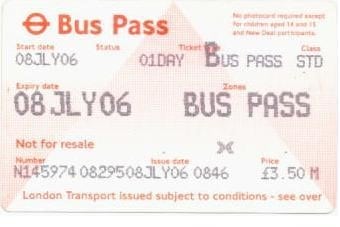
It can be purchased from many of the same places the Oyster card can be purchased at: Tube stations, Oyster card stores, train station ticket offices, and Transport for London Visitor Centres.
As of 2024, the cost for a One Day Bus Pass is £5.90.
PLANNING YOUR TRIP
There are a few resources that could help you plan your trip through London.
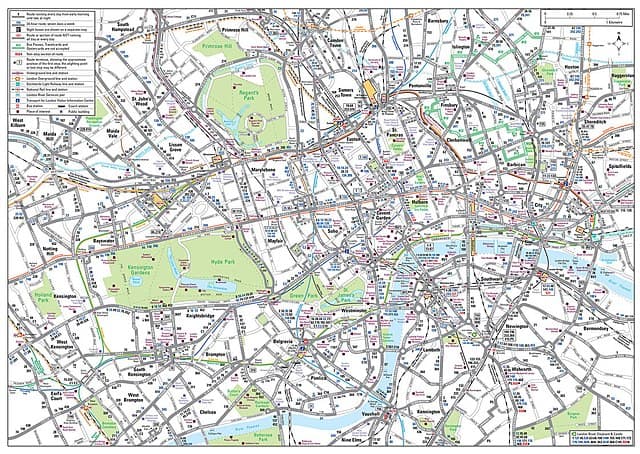
Plan a Journey Website
London Transports Plan A Journey website allows you to enter the names of well-known attractions or Tube stops.
It uses that info to build a route for you using public transport. It also provides options if you’d rather cycle or walk.
PDFs of Maps
For buses alone, you can download PDFs of specific bus maps (or spider maps, as they are called).
Examples of maps are London Bridge - Night Buses, London Zoo and Primrose Hill, and Tower of London.
These maps show you your destination and the various ways to get there including buses, the Tube, and National Rail.
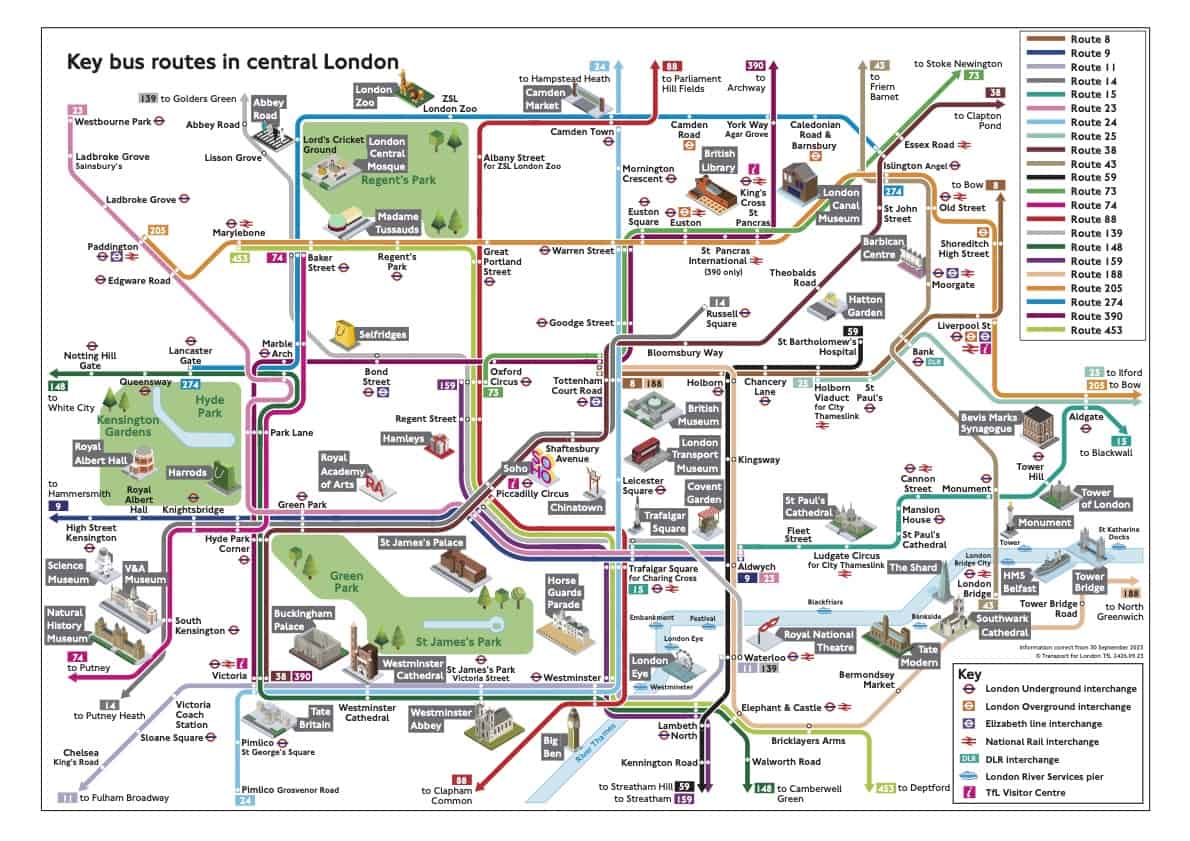
There are a few apps that might be worth downloading.
The TfL Go app allows you to plan your trip, see a live map of your route, and get updates on bus, train, and tram times.
The TfL Oyster and contactless app allows you to “top up or buy a ticket anytime” and check your journey history. It also warns you when your credit is low and your passes are expiring.
The Citymapper London app also gives you live up-to-the-minute updates on routes, offline maps, transport ticket prices, and more.
The Bus Times app will let you know when the next bus is arriving at any stop you wish to view.
TIPS FOR RIDING THE BUS
Here are some tips for riding a bus in London.
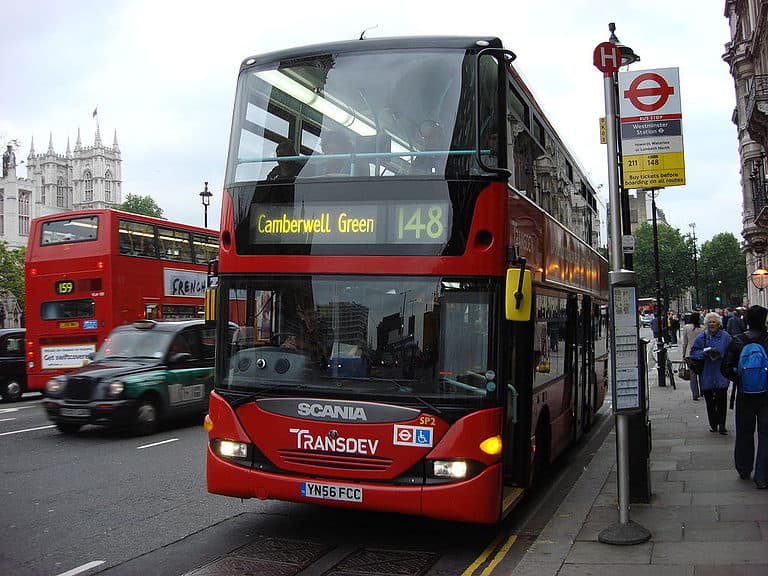
- Plan your trip ahead of time. It can’t hurt to check the timetables against the routes as not all buses run 24 hours a day. Look for an N on the routes that have night buses.
- When standing at a bus stop, look up at the sign above the stop. If it says “request stop” that tells you the bus will drive past unless you request that it stop . This is done by waving the bus down with your hand or a fare card. In fact, it can’t hurt to do this each time you see a bus that you want to get on.'This is done by waving the bus down with your hand or a fare card. In fact, it can’t hurt to do this each time you see a bus that you want to get on.
- Look at both the route number and the destination before boarding. Each stop may see a number of buses pulling up, so you’ll want to ensure you’re getting on the right one. This is where an app might be of help.
- Get on at the front of the bus and tap your card on the yellow card reader. You can depart the bus through the middle or back doors, but for the most part (and until all London buses are updated with card readers in the back) you’ll want to get in through the front.
- If you have multiple cards or devices for paying (for example, an iPhone and an Apple Watch) be sure to keep using the same one. Because of fare caps, you’ll want to ensure you’re not being overcharged if you swipe multiple times in a single day.
- Find your seat quickly. Bus drivers are in and out quickly, so if you’re not sitting, be sure to be holding on to a pole or handrail.
- If you’re traveling a route for sightseeing reasons, you may want to go up to the second level of the bus. The seats at the front of the second level give you the best view, making them popular. Just be sure to head downstairs quickly when you reach your stop (or even beforehand) because bus drivers will sometimes give you just seconds to get off.
- Avoid standing or sitting in the disability/pram (stroller) section at the front of the bus unless you need it. If you do, you will have to move if someone who needs it gets on.
- If buses are full, you can stand on the lower level. Just be sure to hold on to something.
- You’ll be able to follow the stops along the way on the digital signs inside the bus. There will also be an overhead announcement naming the stop. To get off at a certain stop, just before the bus reaches it, press the red stop button that you’ll see on poles around the bus.
- You don’t need to tap on your way out of buses or trams like you do on the Tube.
FUN FACTS ABOUT LONDON BUSES
Before you get down to the work of planning your bus trip, you might want to know a little bit about London buses.
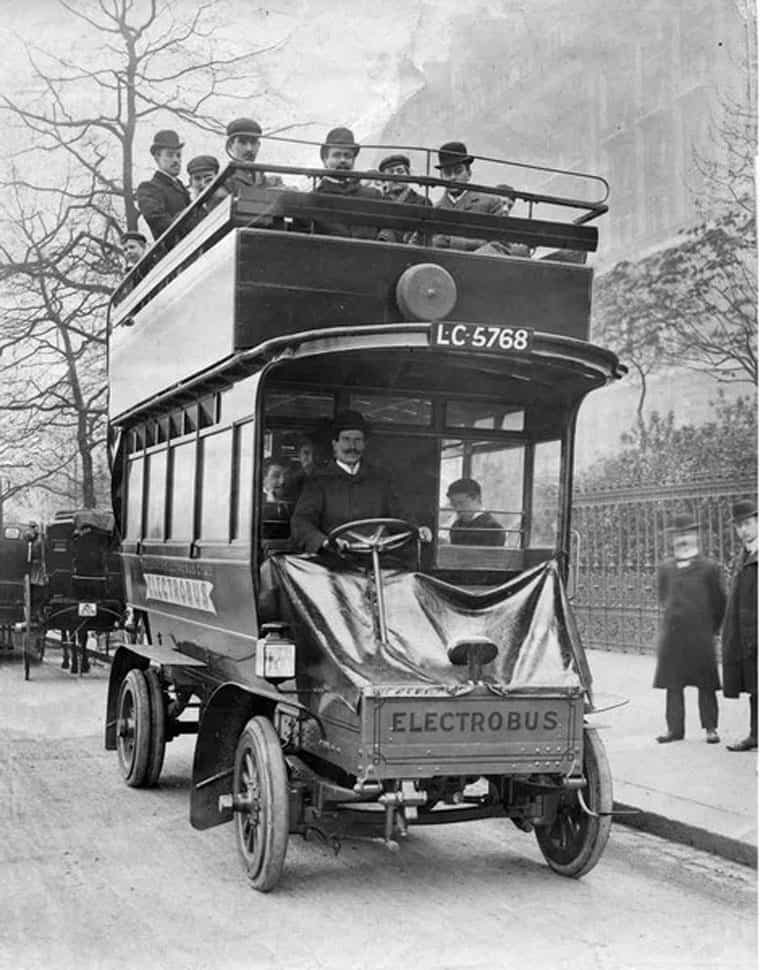
One of the most popular questions we get is:
Why are London buses red?
The very simple answer is that at one time, over 100 years ago, there were many companies with varying shades for their horse-drawn “buses”.
As many firms with differing schedules and rules were added to the city over the years, confusion reigned supreme.
In 1933 the London Passenger Transport Board (or London Transport) was formed in an attempt to bring all of the different companies together under one unified organization.
One of the companies, the London General Omnibus Company (est 1856) had a fleet of crimson buses, painted that way to make them stand out from others.
They were also the largest operator in the city so London Transport adopted their color scheme for all London buses.
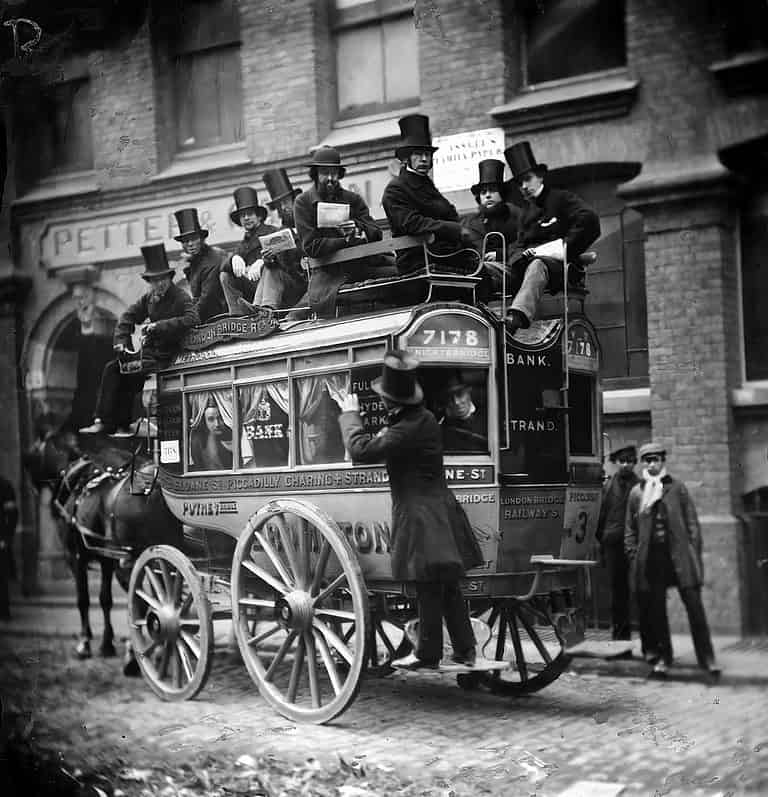
Another frequent question is :
Why are London buses double-decker ?
The answer to this is simple. There was a need for more space to transport people.
In fact, this goes back quite a long way, as the first double-decker bus was actually a two-level horse-drawn carriage!
By the 1920s, London started using the non-horse version of the double-decker bus we see today.
It remains a better fit for a city with tight streets, and one not often seen in other countries.
Today the red double-decker bus is a symbol of London, as well known to outsiders as the red telephone booth and black cab.
Choose a Destination... I want them all PLUS general travel tips. Amsterdam Berlin Boston Charleston Chicago Dubai Lisbon London Los Angeles Miami Nashville New York City New Orleans Paris Philadelphia Prague Rome San Francisco Washington DC
About The Author

North America
United kingdom & ireland, middle east & india, asia & oceania.

The London Eats List
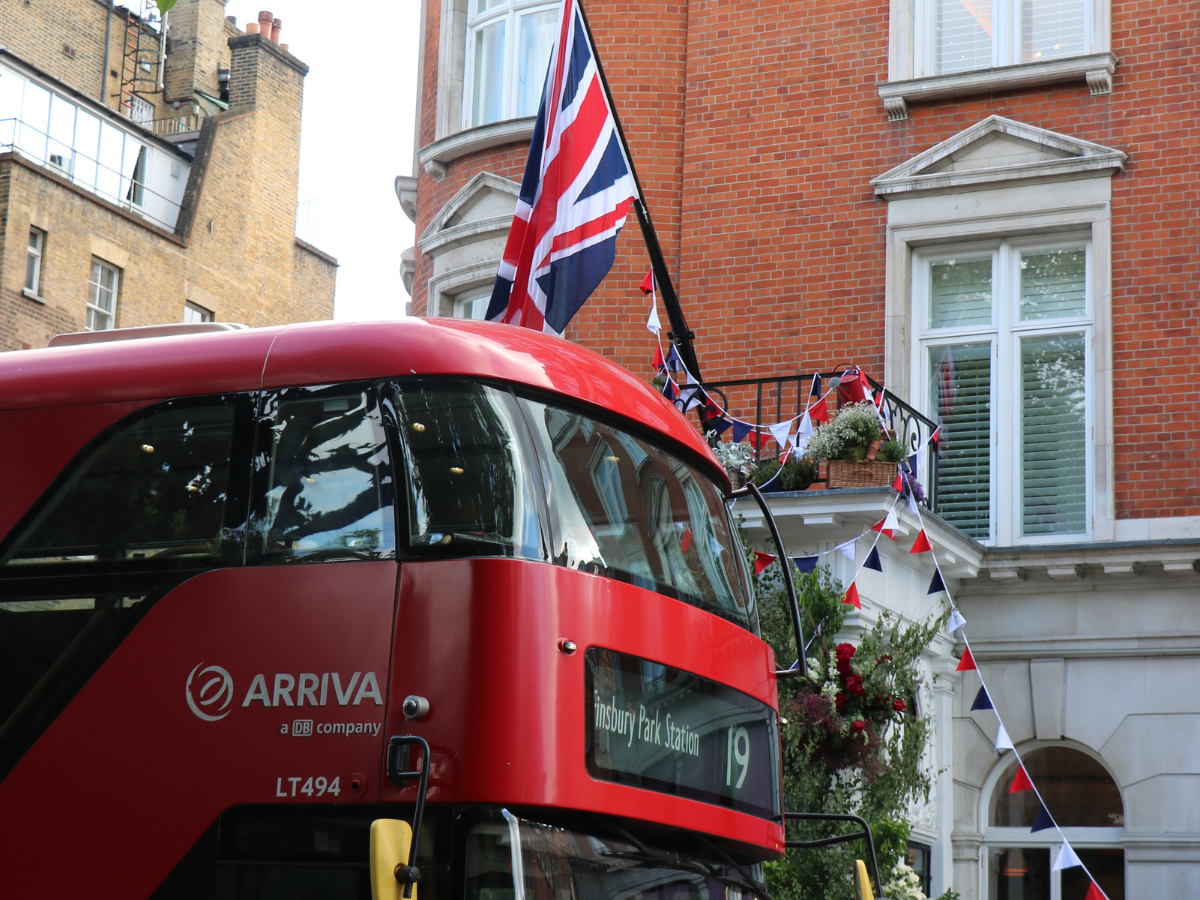
- London Guides
How to Use London Buses: Step by Step Guide
London buses are a great way to get around and see the city. London has approximately 8,600 buses that cover 700 different routes, with the buses carrying about 6.5 million passengers a day (as stated by TFL)! The most important thing to know when learning how to use the London buses is that they are cashless – this means you will not be able to pay with physical money – our guide tells you how to pay and how to plan your route!
Table of Contents:
- Planning Your London Bus Journey
- Signalling Your Bus to Stop
- Tips for When You’re on the Bus
- How to Get Off London Buses
- Accessibility
- Other Modes of Transports
How Do You Pay for London’s Cash-Free Buses?
As we’ve stated, London’s buses are cash-free – this means those pounds you got exchanged won’t come in handy here. There are a few ways to pay for the bus:
- Contactless – You can use contactless cards or Apple/Google Pay to tap onto the bus. Not all cards issued outside of the UK will work, so double check with TFL before arrival, or bring a backup.
- Oyster Card – The Oyster Card is a London travel card that can be topped up with money. You use this to tap on the bus.
- Physical Ticket – At train stations you can purchase travel cards for the day which can be used on both the buses and the tube.
When you step on the bus you will need to tap on the yellow circle by the driver, or show them your ticket. Unlike the tube, you do not need to tap out as the bus is a set fee.
How Much Do Bus Journeys Cost?
These are the current prices as of October 2023 – they may be subject to change.
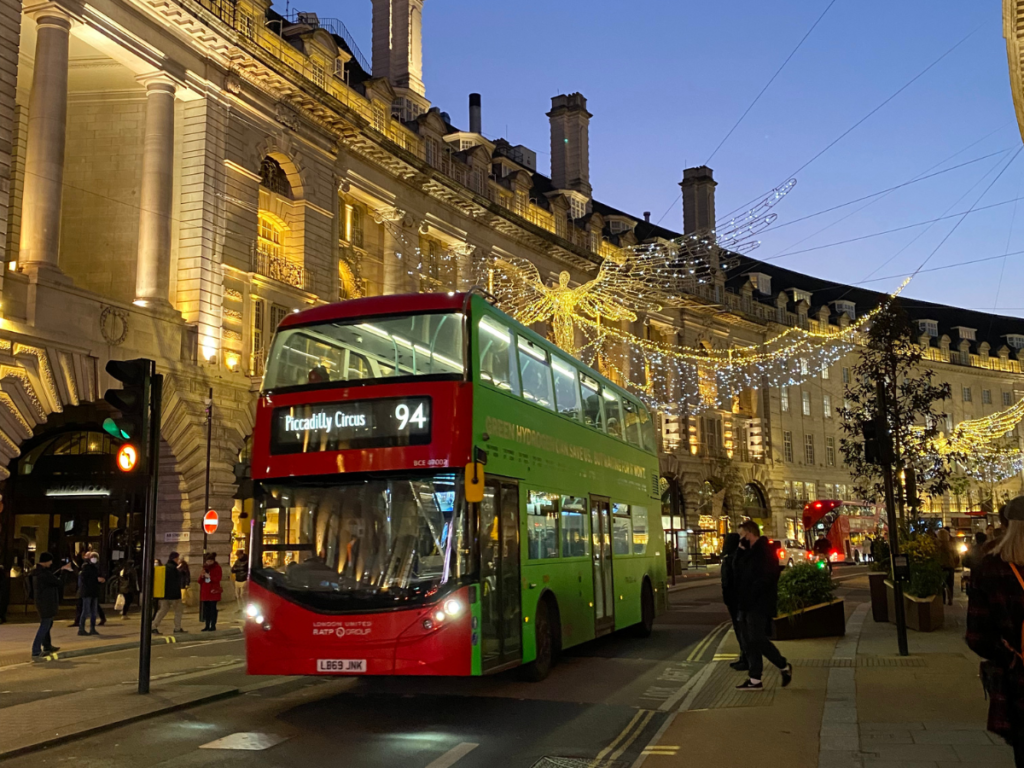
A single bus journey will cost you £1.75.If you take another bus within the same hour, you’ll fall under the ‘Hopper Fare’ and not have to pay for the second journey.
There is a daily cap of £5.25 for bus-only travel 9 (if you use another transport method e.g. the tube in the same day your cap will be higher).
Children aged 5-10 travel for free on London buses. If you’re moving to London with kids aged 11-15, then we’d recommend you apply to get a Zip Card for them which gives them free travel on buses – this is not available for tourists and you will have to pay.
How to Plan Your London Bus Journey
There are a handful of ways we’d recommend to plan your bus journey across London:
- TFL Journey Planner – TheTFL website has a journey planner which allows you to filter to just bus journeys by putting in your start and end destination.
- Citymapper – Our favourite map for planning bus routes is Citymapper, this will tell you which stop to go to, which bus to get, and will also tell you when it’s time to get off!
- Apple/Google Maps – Your regular map app on your phone can also let you know which bus you’ll need to get and from where.
Finding Your Bus Stop
Once you’ve identified which bus you need to be on, your chosen method of route planning should tell you which stop. For popular locations, e.g. outside Waterloo Station, there are lots of bus stops which can be confusing. Luckily they are all given a letter for easy identification – take a look at the signs to ensure you’re standing at the right one!
At the Bus Stop: Getting a Bus to Stop for You
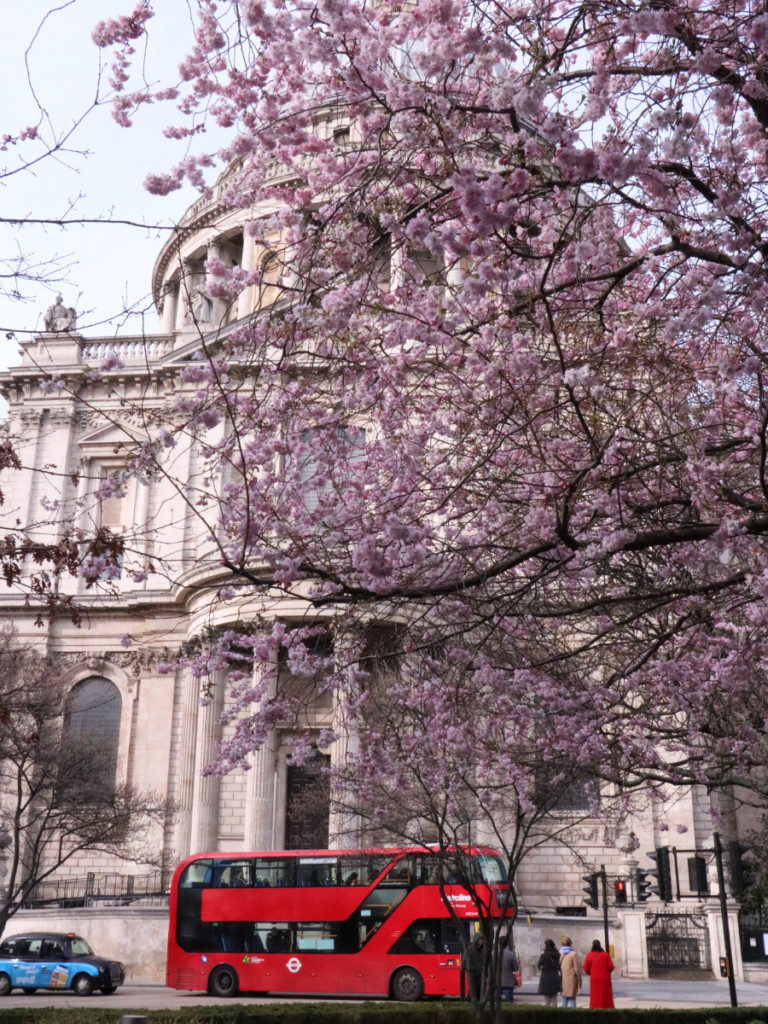
Once you’re at the stop it’s time to wait for the bus – luckily London buses come at relatively short intervals so you shouldn’t be waiting for too long.
When you see the bus you want approaching, go and stand near the area where the doors will stop and stick your hand out to signal to the driver that you want to get on. If you don’t do this, they may not stop if no passengers are looking to get off.
4 Tips for When You’re on the Bus
When you’re on the bus, you’ll need to pay straight away by tapping your payment method on the yellow circle (this is by the driver and very obvious when you board) or showing them your ticket. Here are our top tips for the bus:
- Move down inside the bus – Never stand by the driver or at the front of the bus as this can limit the driver’s view and make driving dangerous. If you do this, it is likely the bus driver will tell you off.
- Priority seats – There are priority seats on buses for those less able, those in wheelchairs, those who are pregnant or with small children. Try to avoid sitting in these seats, if you do be ready to give them up for someone less able to stand than you are. Buses can get busy so even if you’re not in a priority seat and see someone who needs a seat do give it to them.
- Hold on – Buses are on the main roads so may turn or stop suddenly. If you haven’t got a seat make sure you hold on to the hand rails provided.
- Get off at the back doors – The back doors of the bus are for getting off, whilst the front are for passengers to get on.
How to Request a Stop to Get Off
Requesting a stop on the bus is super simple, simply press the buttons on the upright rails before your stop. Make sure you do this after the last stop before yours.
Modern London buses have visual displays with the stops on, as well as audio announcements. We also recommend keeping an eye on your chosen map app too to make sure you get off at the right time.
Red Bus Accessibility
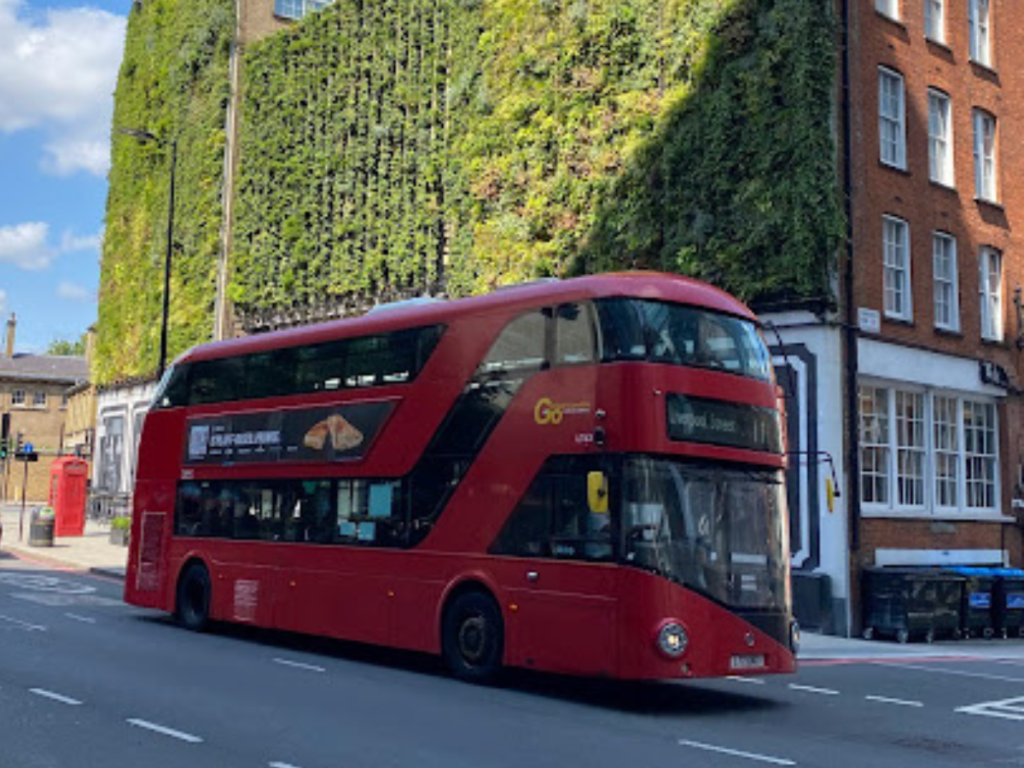
Wheelchair and mobility scooter users travel for free on London buses. The vehicles are also low to the ground and tend to have ramps that the driver can deploy for wheelchair users to embark. Each bus has a designated area for wheelchairs, with rails and request buttons at an appropriate height.
If you are blind, the drivers should recognise by your cane or guide dog and stop to check if they are the bus you want. You can also ask those around you. Guide and assistance dogs are welcome on all London transport. The buses use audio announcements for stops so you should be able to hear when to get off. In our experience we’ve also seen visually impaired passengers let the driver know when they want to get off, and the driver has ensured they’re aware when they get to their stop.
In our research for how accessible London buses are, we’ve actually struggled to find easy information from trusted resources, like TFL on this matter. TFL has one article on London travel with sight or hearing loss .
What Times to Buses Run in London & Night Buses
Whilst some bus routes will only run during the day, there are a lot of them that run 24/7. You’ll also find specific night buses that are named with an ‘N’ in front of their number. More buses tend to be put on outside of tube hours, so between midnight and 5am.

Other Transport Methods in London
London is known for its fantastic public transport. If you don’t fancy seeing the sights on a bus, then we also recommend learning how to take the tube for an efficient method of travel.
London also has many black cabs (official licensed London taxis) that are available for private fares.
We also recommend walking to as many places as you can, as this way you won’t miss out on any of London’s hidden gems!
About The London Eats List
We’re here to help inspire your next trip to our wonderful city! From guides to London’s oldest bookshop , to where to enjoy a romantic meal in the Big Smoke – we have it all for you.
You May Also Enjoy
Lavender in fields in & around london, notting hill: the ultimate neighbourhood guide, winter in london: a local’s guide to frosty season.
- Tokyo Cheapo (繁體中文)

Getting Around
To the uninitiated, getting around in London can seem daunting. What’s the difference between the train and the Overground? How do I know which bus stop to wait at? What on earth is was the Emirates Air Line? All reasonable questions. This guide aims to equip you with all the knowledge you need to confidently and efficiently navigate the city.
The basics of getting around in London
Oyster cards & contactless.

Just arrived or moved to London? Welcome. To get around town you can either use an Oyster card which you can pick up from any station and most newsagents will sell them too. You have to pay a £5 deposit which you can get back along with any remaining credit .
If you’re going to be returning to the city or staying for a while, then it’s worth registering your card online so you can keep your card topped up easily at any time.
Alternatively, you can use a contactless payment with a bank card or mobile payment instead – just tap your card on the reader at the gate. London transport accepts contactless mobile payment from Apple Pay, Google Pay, Fitbit Pay, Garmin Pay, bPay, and Samsung Pay. If you’re visiting from abroad you may be charged overseas transaction fees, if so, getting an Oyster card makes more sense.
For people moving to or commuting to London, your employer may run a discounted travel card scheme to allow you to get a season ticket which is deducted from your wages each month, which also means using an Oyster card rather than contactless.
Daily fare caps
Whether you use an Oyster or contactless, there are daily pay as you go fare caps at play, which limit the amount you pay no matter how many journeys you take on a given day.
For example: a zones 1-2 fare cap is set at £ 7.70 (from 1st March 2022), meaning you can take as many bus, Tube and Overground journeys within zones 1 and 2 in any given day and you will not be charged more than £ 7.70 .
Daily caps are calculated from 4:30 am until 4:29 am the next day. Unless you’re on a real late one, you can often get home from a night out for free if you’ve already maxed out your Oyster. Weekly Caps are calculated from Monday to Sunday.
Table of Daily and Weekly TFL Fare Caps
Prices below valid from 1st March 2022.
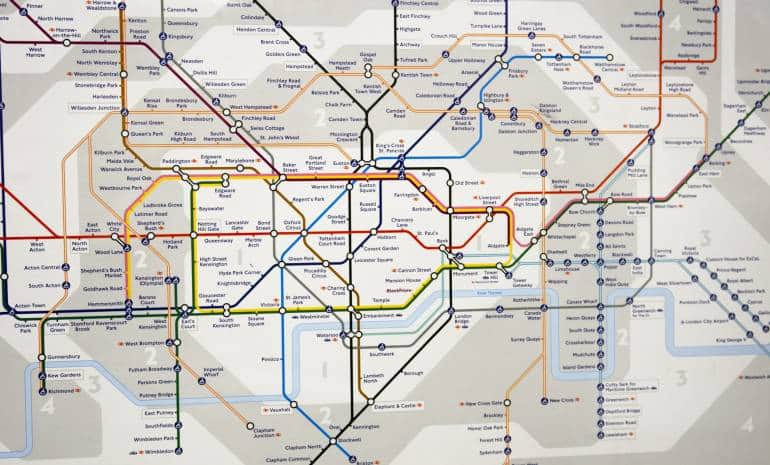
But what are these zones you speak of? The London transport map is divided into different zones, which roughly equate to how central a location is. For example, Oxford Circus in the middle of town is located in zone 1, while Richmond is 9 miles away from Waterloo and falls under zone 4.
Ticket fares are based on how many zones you travel through. So, travel within zone 3 will be cheaper than travelling from zone 3 into zone 1. Some stations, such as Stratford zones 2/3, sit on the border of two different zones. This means your journey will be charged at the cheaper rate depending on your direction of travel. If you travel into the city, your journey will be classed as starting in zone 2. If you travel further out of town, your journey will be classed as starting in zone 3. Each station and bus stop will tell you which zone you’re in, and they’re also clearly marked out on transport maps.
Buses Are The Cheapest Public Transport In London
Zones do not apply to bus fares, meaning you can travel anywhere in London for the same fare of £1.65 Additionally, the Hopper fare allows you to bus hop for one hour with no additional charges. Yes, that’s right you can make unlimited bus journeys within one hour of touching in with your Oyster or contactless. As long as you scan the same card on each journey you will not be charged again within an hour. Daily caps on buses are £4.95, and if you have the time, travelling by bus is easily one of the best and cheapest ways to see some of London’s landmarks .
Planning your journey
Even if you’ve travelled around London on a daily basis for a good few years, you’ll probably need to use an app to help plan your journeys. Apps can alert you to service updates, signal issues or changes to bus routes. TfL is great for basic journeys , live updates, station facilities and ticket types.
But CityMapper is your best bet for speed and efficiency. It has a sophisticated algorithm that takes into account how often different trains or buses depart, distance between stops and time of day to provide you with a selection of different route options. And it even lets you know which carriage of the Tube to get on for a swift exit. It also shows you how much your journey will cost you, so you can work out a cheaper alternative if you plan ahead.
Failing that, Google Maps can be useful, especially if you’re walking. You can also download the map to your phone when you have wifi to avoid using your data (or if you’re here without a UK SIM )
The Tube (the London Underground network)

The London Underground network serves 5 million passengers each day, covering 270 different stations. It’s the oldest underground transport system in the world, and has been transporting people around the capital since 1863. Fortunately it’s had a few improvements since then. Most people call it the tube, and the majority of the central stops are underground. But as you get further away from the middle of town the network leaves its subterranean roots. In fact, 55% of the network is actually located above ground.
The Tube is a fast, efficient way to travel. Trains leave most platforms between two and 5 minutes (this is fairly standard, but they can be further apart, especially on Sundays), and take around two minutes to arrive at the next station, depending on the line you’re on.
The different lines each have a name and a distinct colour to help you trace your journey. Make sure you know whether your destination is northbound or southbound, or eastbound or westbound, as that will help you get to the correct platform and watch out for lines like the district and northern lines which have two different branches, although the branch name should be on the front of the train carriage as well on the platform screen and train announcements.
You can travel on most lines from 5 am until 1 am the next day. While at the weekend you can catch a reduced Night Tube service on a number of lines throughout the night. The downside is the Tube can get hot and sweaty during busy periods and especially in the summer (although some upgraded lines now have air con). If you can help it, try to avoid the morning rush between 7:30-10 am and the afternoon rush between 4.30-7 pm. If you’re travelling around central London, it can often be easier and more enjoyable to walk between destinations, rather than taking the Underground and changing lines.
London buses

London buses are brilliant at connecting the dots between train lines and other parts of the city. They are mostly double-deckers, meaning you can get a great view of the city streets as you travel. However, they are generally slower than the Tube and are susceptible to traffic.
Certain journeys can take two-to-three times as long during rush hour. When planning your bus journey, pay special attention to the route number and specific bus stop name and code. For example, if you needed to get the 45 bus heading north from Brixton, you’d need to look out for Route 45, Brixton Stop N.
There are 673 routes, 19,000 stops and 8,500 buses in London, meaning it’s easy to get confused if you’re not careful. If you get the right bus number, but wrong bus stop, you could end up travelling in the wrong direction.
Many bus routes also run 24 hours a day, so you can easily get home once the underground and trains have stopped running.
Travelling out of London
London’s major train lines connect the capital to the suburbs, the coast and even several European cities , So whether you’re looking for an easy day trip , a weekend hike or a city break, there are plenty of high speed trains to get you there. Flying in from abroad? Check out our guide to the cheapest ways into the city centre from London’s six airports .
London Overground

The Overground is a great way to travel, and mostly covers zone 2 and beyond. You can travel east to west or north to south easily without having to go through central London or taking suburban railways – great for getting to places like Kew Gardens .
It’s a bit less frequent than the tube, but you get views of the city, air-conditioning and wider trains. On busy days, these little luxuries really mean a lot. Look out for the orange symbol, some stations like Highbury & Islington have both Overground and Underground stations in the same place, so it makes for a fast and easy transfer.
The Elizabeth Line
It may have been delayed several times, but the much anticipated new line opened in May 2022. Or at least, the first phase of it opened. It’s on the tube map and runs partly underground, but isn’t technically part of the London Underground. Confused? Here’s the quick explanation: originally called Crossrail, the whole line will eventually cover 73 miles connecting the suburbs with the city centre and Heathrow Airport. Eventually it will run all the way from Shenfield in Essex and Abbey Wood in South East London to Reading, Berkshire and Heathrow to the west of London. At the moment, the western tunnels aren’t connected to the central ones, but are expected to be in Autumn 2022.
Contactless and pay-as-you-go Oyster payments can be made on most of the central parts of the Elizabeth Line, and the fares are the same too. The line has slashed the travel time across several journeys (For example Liverpool Street to Woolwich is now halved to 15 minutes) and the new stations are much more spacious and accessible than a lot of underground stations too.
Passengers should eventually be able to travel the full length of the line from May 23, but in the meantime, if you get the chance to use it to travel through the central parts of the line, it should be a more pleasant experience than getting the tube.
Other Train Networks in and around London

Thames Clipper (ferry boats)

The Thames Clipper ferry network is an exhilarating way to travel. Connecting Putney in the west to Woolwich in the east, the boat zips along the River Thames, taking in some of London’s top landmarks along the way. You can use contactless and oyster on the Thames Clipper, but the river is divided into different zones from the underground and the prices are different too.
River services operate in three zones: west, central and east, and a single central zone journey is £8.70.
The Former Emirates Air Line (cable car)

The Emirates Air Line was the name of the cable car that takes passengers on ‘flights’ across the Thames from “Emirates” Greenwich Peninsula on the south of the river to “Emirates” Royal Docks on the north. It’s quite a niche mode of transport, only serving two stops, but it’s great fun nonetheless.
As of June 2022, the branding contract with Emirates has ended, so at the moment we’re not sure what the future of this cable car line holds!
Bikes in London

Cycling is often as fast (or sometimes faster) than getting the tube, and is a great way to see more of London and really get your bearings. There are dedicated bike routes all over the city, which will show up on CityMapper but are probably best accessed via Google Maps.
There are few places to hire bikes on the go around London, the biggest scheme is Santander Cycle which has over 800 docking stations across London (mostly in zones 1 and 2, and a limited number in outer London). You can just turn up and rent a bike for £2 a day (plus an additional £2 for each hour after that) and you can just drop it off at another docking station one you’re done.
One nice bonus is that journeys under 30 minutes are free. This means you can cycle for 29 minutes and dock the bike at a station, then get another bike out and do the same throughout the day to avoid additional charges.
If you find yourself doing a lot of cycling and want to get a bike of your own, see our article on where to buy a bike in London .

Where To Store Your Luggage in London
Many venues and tourist attractions ban large bags. Here's where to store your luggage, for hands-free exploring.

European Cities You Can Visit from London by Train
It’s easy, quick and relatively cheap to get to these major cities and lesser-known destinations by rail. Plan now, travel later!

Summer Day Trips From London
Summer is a good time to escape the sweaty heat of the capital and explore some of the rest of the country.

Post Brexit Travel to Europe
Post Brexit Travel to Europe explainer: visas, mobile roaming charges, business travel, healthcare, booze limits, driving and pets.

Best London Apps
Whether you are visiting London, have just moved in to town or are a lifetime local, here are the best London apps you need to download right now to make life in the city a breeze – and the ones […]

Easy Weekend Trips from London by Train
From dreamy scenery to historic cities, or just a coastal retreat – here are some of our favourite weekend trips from London by Train.

London Parking Guide
Parking in London isn’t always a picnic. With busy historic roads and specialist charging zones, you should know what to expect before driving into central. This London parking guide for cheapos will help you park in the capital without hurting […]

Cheap Transport from London’s 6 Airports to the City Centre
There are many ways to get from the many London airports to the city centre. We break down your options on how to do so cheaply.

Unique London Tours: Six Ways to See the City From a Different Perspective
Step out of your comfort zone and into unexplored areas of London

Off the Beaten Train Track: 5 Unconventional UK Cities for a Weekend Getaway
While European city breaks may be off the menu for a little while yet, the UK has its own surprisingly picturesque urban getaways.

Getting Around in London
From apps to common sense tips: our guide to getting around in London

Some London Tube Stations to Close Amid Coronavirus Pandemic
A list of London Tube stations to close starting March 20

Cheap and Easy Ways to Travel from London to Edinburgh
When heading to the fringe, preparation is everything

London to Edinburgh Festival Fringe: Everything You Need to Know
Heading to Edinburgh Festival Fringe in August? We’ve got you covered.

Chasing Cheap Flights: Bagging a Bargain Every Time
We explore the UK's biggest flight club, which promises to drastically reduce flight prices. So is it worth it?

Europe on a Shoestring: 7 Planning Tips For a Memorable Trip
Considering a cheeky jaunt to the mainland? Start planning early to make your dreams of budget travel in Europe a reality.
Close without accepting

- Places to Visit
- Sightseeing
- Practical Tips
- Where to Stay
Visitor Guide to London Transport Tickets and Passes
Public transport in London is not cheap. If you are on a budget, it’s worth spending time to make sure you buy the cheapest ticket or pass for your visit.
You should never pay the full cash fare for tickets on any form of transport in London. The full cash fare means buying a single paper ticket from an underground station ticket machine, either with cash or coins or with a debit/credit card.
It’s always cheaper to Pay as you go with a contactless debit/credit card or Oyster card or to buy a Travelcard or bus pass.
London Transport ticket/payment options
There are four main options to choose from and they all save you money compared to paying the full fare:
Pay as you go Oyster card
This is a card that you ‘top up’ with money and use to pay for cheaper single tickets and discounted rates for unlimited travel for the whole day (the ‘daily cap’). The Oyster card costs £7 .
Contactless debit or credit card
Instead of an Oyster card, you can use a contactless debit or credit card . Fares are the same as the Pay as you go Oyster. You do not need to register your card to use it.
One day or weekly bus pass
Bus passes are available for 1 day or 7 days for unlimited travel for the whole of London.
One day, weekly or monthly Travelcards
Travelcards are travel passes for unlimited travel within certain zones .
Travelcards, Pay as you go Oyster cards and contactless debit/credit cards are valid on all types of transport in London:
- Underground (the tube)
- Local suburban trains
- London Overground
- The Elizabeth line
- Docklands Light Railway (DLR)
Please note: The ticket prices listed below are for visitors staying in zone 1 (central London) and zone 2. The information is still relevant if you stay outside zone 1-2, but the prices will be higher (apart from bus fares). Full prices for all zones are on the ticket type pages.
Best transport ticket or pass for 1,2,3, 4 or 5 day visits to London
For short trips to London paying with a contactless debit/credit card/device is the cheapest ways to pay for transport. The fares are the same with an Oyster card, but the card now costs £7 (and is not refundable).
If you use the underground for 3 or more journeys during the day, there’s a ‘daily cap’ — the maximum amount deducted from your card.
For travel in zone 1-2:
- Single tickets on the underground cost £2.80 with an Oyster card/contactless card. If you buy a ticket from a ticket machine, the full cash fare is £6.70.
- If you use your card to pay for transport in central London for the whole day, the ‘daily cap’ – the maximum amount deducted is £8.50.
The next best option, if you don’t have an Oyster or a contactless card, is a One Day Travelcard. It’s £15.90 for zones 1-4, but you still save money if you use it for 3 or more trips on the underground.
Is there anything cheaper?
Yes, don’t use the underground or trains and only use the buses. The ‘daily bus cap’ with a Pay as you go Oyster card or contactless card is the cheapest way to travel around London for the day.
For all zones:
- A bus fare is £1.75 for unlimited bus journeys within one hour if you use an Oyster/contactless card. (Cash is not accepted on London buses)
- If you use an Oyster/contactless card to pay for bus travel for the whole day, the maximum amount deducted from your card is £5.25 .
If you don’t have an Oyster or a contactless card, a paper One Day Bus pass costs £5.90.
- Read more about the Pay as you go Oyster card
- Read more about contactless cards
- Read more about bus tickets and passes
- Read more about One Day Travelcards
Best transport ticket or pass for 6 or 7 day visits to London
A 7 day weekly Travelcard is cheaper than paying for 6 ‘daily caps’ with a Pay as you go Oyster/contactless card.
- Zone 1-2 weekly Travelcard costs £42.70.
If you think there will be a few days when you won’t be using public transport, use a Pay as you go Oyster card or contactless card instead.
Read more about Weekly Travelcards
Again, if want to save money, make sure you only travel by bus; a Weekly Bus Pass (starts any day) or the Oyster/contactless weekly bus cap (Monday-Sunday) is £24.70.
Related pages
- London transport zones
- Oyster cards
- Travelcards
- Contactless cards
- Bus tickets & passes
- Child tickets & passes
Last updated: 22 February 2024
Transport tickets & passes
- Guide to London's transport tickets
- One day & weekly Travelcards
- Zone 2–6 weekly Travelcards
- Bus tickets & passes
- Oyster card
- Oyster single tickets
- Oyster card refunds
- Child tickets & passes
- Local train tickets
Useful information
- Plan your journey
Popular pages
- Left luggage offices
- Congestion Charge
- 2 for 1 discounts at London attractions
- Top free museums & galleries
- Cheap eating tips
- Heathrow to London by underground
Copyright 2010-2024 toptiplondon.com. All rights reserved. Contact us | Disclaimer | Privacy

Hi, I'm Candace
Candace Abroad
A London & Travel Blog

Hidden London , London , London Travel Tips & Inspiration · August 16, 2023
The Best Bus Routes for Sightseeing in London 2024 (for £1.75!)

Table of Contents
Looking for the best routes for sightseeing in London? Skip the on-and-off bus tours and see London like a local with the best bus routes to take in the city sights, all for £1.75 .
This post may contain affiliate links. Check out my Disclosure & Privacy Policy for more information.
If you’re visiting London for any amount of time you’re bound to want to see the city by bus. And I can’t blame you. I mean, what’s more iconic than cruising past Big Ben and Westminster Abbey on a big red double-decker bus…I’ll wait.
But, I’ll let you in on a little secret. There’s tons of bus routes across London that don’t require a fancy tour guide and pre-booked tickets.
All you need is an Oyster card, a little speed (to run to the top deck seat) and you’re on your merry way to gorging on some of the best views of the city , all for £1.75.
Now of course, if you’re keen for a proper tour guide and sightseeing experience, there’s nothing wrong with hopping on a bus tour ( just make sure it’s a cool one ). But for the rest of us, here’s the 5 best bus routes in London for sightseeing, Candace approved.
The Best London Bus Routes for Sightseeing

1. Bus Route Number 11: Tamed Fulham to Buzzing Liverpool Street
Click for the latest bus timetable.
Bus 11 has gained a reputation for being the closest you can get to a sightseeing tour, all for the price of £1.75. So I checked in out. Hopping on at Fulham Broadway and whizzing through the city until I ended up in the heart of Liverpool Street.
For this journey, start at Fulham Town Hall (Stop R) . On route, you’ll see the famously beautiful Chelsea road and glide through Belgravia until you end up in Westminster, and it’s pretty much all eye candy from there.
The St.Paul’s Cathedral view is breathtaking, but you’ve equally got Westminster Abbey, Westminster Cathedral and the Houses of Parliament to soak up along the way. You’ll also pass the Royal Courts of Justice ( hey Bridget Jones ) as you continue through the historic Strand and London’s financial district.
Once you’ve watched the city go by, you’ll realize you’ve suddenly landed right plop at Liverpool Street station. Reward yourself with a visit to Spitalfields market or a jaunt to Shoreditch .
2. Bus Route 24: Chic Pimlico to Leafy Hampstead Heath
I’ve always loved Pimlico and adored Hampstead Heath, so imagine my surprise when I found out you could see both in one route…and snag amazing views along the way — heaven.
Wait for your carriage to arrive at Victoria Station (Stop J) and take in the grandeur of Westminster and Downing Street before saying hey to the friendly lions at Trafalgar Square.
You’ll also get a great glimpse of the theatre district from here before making the trek into the belly of Camden (I would suggest hopping off here to explore before continuing on your journey).
Before you know it, you’ll realize you’ve made it all the way to leafy Hampstead. And can proceed to give yourself the city break you deserve after all that sightseeing.
3. Bus Route Number 9: Beating Aldwych to Rocking Hammersmith
Bus number 9 is one of the oldest routes in London, with impossibly charming views.
Beginning at Aldwych Bus House (Stop H) you’ll pass one of London’s most affluent neighbourhoods before you’re flung into views of the Somerset House. After which, you’ll find yourself along the Strand going all the way to Trafalgar Square.
If you keep your eyes winced, you’ll also catch a full glimpse of the famous Hyde Park (and Green Park) along Piccadilly.
Just like that it’s time for the crème de la crème of London — Knightsbridge. The luxurious London neighbourhood will leave you with plenty to gawk at — from the world-renown Harrods to just about every designer shop you can imagine on every corner.
You’ll also make your way past Kensington Gardens and High Street (worth the pit stop) as well as Holland Park before ending up in Hammersmith.
4. Bus Route Number 74: Posh Baker Street to Charming West Brompton
To enjoy a bit of the finer London life (well, by bus) you’ll definitely want to head onto bus 74, taking you from Baker Street Station (Stop A) . Passing through all the high street shops, dazzling Park Lane and the charm South Kensington, it’s absolutely lovely.
After you’ve finished all your ‘ooing and ahhing’ you’ll have centre stage views to the liveliness of Earls Court.
You can stop off here for a little jaunt or happily continue onto West Brompton. There’s a gorgeous cemetery here that’s also worth visiting at the end of your journey ( especially in autumn! ).
5. Bus Route 139: Historic Waterloo to Whimsical West Hampstead
And lastly, the ever enjoyable bus 139. The good news is if you’re already sightseeing, you’ll be at a great starting point from Waterloo Station / Tenison Way (Stop J).
Once you’ve hopped on you’ll instantly be met with striking views of the Somerset House before you mosey along to Covent Garden .
You’ll probably get FOMO of all the action going on in the area (I mean…it is Covent Garden ) so consider having a little peak around ( or a quick walking tour ) before continuing onward.
A short but sweet ride along will lead you to Trafalgar Square, before taking you into the heart of Picadilly Circus (you’re gonna wanna get your camera out for this).
Bond Street and Selfridges & Co. will come up next, followed by Abbey Road — get out and get your Beatles pictures!!
Tips for taking the Best Bus Routes in London for Sightseeing
• Thanks to the Hopper Fare , you can ride London’s buses as many times as you like within one hour of tapping in
• If you’re touring London, you can choose bus routes according to your travel itinerary for the day, (kill two birds with one stone kinda thing)
• If possible, try to start your journey during off-peak hours (9:30am-4:00pm and 7:00pm-6:30am) to make sure you can snag a seat at the front of the top deck
• Snag a seat at the front of the top deck 😉
Map of the Best Bus Routes in London for Sightseeing
Save to your phone.
Happy Londoning,

Get on the List
You’ll also love.

Latest from Instagram
Follow @candaceabroad
Moving to London? Check out my Digital Moving Guide!

join the monthly newsletter
Subscribe for itinerary inspiration, travel inspo & exclusive content straight to your lovely inbox.
Affiliate disclosure
Theme by 17th Avenue Designs
Disclosure & Privacy Policy
Copyright © 2024 Candace Abroad Theme by 17th Avenue
Go to London by bus from £17.25
Bus stops in london, bus station green line.
Bulleid Way street, London
Bus station Victoria
Buckingham Palace Road 164, London
London - Victoria Coach Station
Victoria Coach Station, 164 Buckingham Palace Road, SW1W 9TP, London
Special instructions
Access : Buses are inside the Victoria Coach Station.
Hammersmith bus station
Hammersmith Broadway 16, London
Stratford City bus station
Montfichet Road, London
Discover London by bus
Huge, buzzing, international and always at the sharp end of fashion, London is a truly global city, and yet it would take more than a lifetime to uncover all its secrets. With Ouibus, you can discover a new side to London! From Buckingham Palace to Leicester Square, explore this British jewel, soaking up the history and culture that can be felt everywhere. Take advantage of the numerous world-class museums that are completely free to visit, such as the Natural History Museum, the Science Museum and the Victoria and Albert Museum. If youre passionate about the arts, dont miss the National Gallery and the Tate Modern. Curious travellers will want to visit Harrods, a department store that aims to satisfy even the most demanding of customers. For more affordable shopping, spend a few hours in Covent Garden before heading to Oxford Street and Regent Street. No longer is Britain considered the home of stodgy, tasteless food. Theres been a foodie revolution in recent years and London is the epicentre of this. Youll find brilliant restaurants in Soho and Shoreditch, highlighting innovative modern British food. London is also known for showcasing authentic and delicious food from all over the globe. A detour to Brick Lane will take you past Indian curry houses and a bagel bakery thats open all night, great for a post clubbing snack. London is revered for its superb nightlife offering. On any given night, youll find anything and everything going on in London, from edgy warehouse parties in Hackney to gatherings in cool cocktail bars in Soho, from glamorous club nights in Mayfair to bluesy folk singers strumming in basement jazz clubs. Theres so much to experience in London, but thanks to Ouibus, London seems closer than ever!
Buses to London
- Paris > London
- Lille > London
- Paris - Roissy CDG Airport > London
- Antwerp > London
- Brussels > London
- Utrecht > London
- Rotterdam > London
- Amsterdam > London
- Bruges > London
- Calais > London
- La Haye > London
Buses from London
- London > Paris
- London > Lille
- London > Paris - Roissy CDG Airport
- London > Antwerp
- London > Brussels
- London > Calais
- London > Utrecht
- London > Rotterdam
- London > Amsterdam
- London > La Haye
Destinations near London
Blablacar app is the simplest way to book bus tickets to london.
All your rides and tickets in one place, up-to-date info and exclusive mobile-only features.
- Book a bus ›
- Cities served by bus ›

Avoid These Tourist Traps In London And Visit These Destinations Instead
O ne of the world's greatest cities, London is packed with tourist attractions so impressive that you'll want to add them all to your itinerary. From the Tower of London to Buckingham Palace to the Churchill War Rooms, the list of unmissable landmarks seems endless. Don't worry, though -- it's possible to visit most of them in just a two-day trip . When you're on a tight schedule, it's important to avoid time- and money-wasting tourist traps in favor of visiting sites that are worthy of your attention.
Whether it's an overrated and overpriced wax museum, a kitschy dungeon experience, or a super crowded viewpoint, there are many places to avoid visiting in the U.K.'s heady capital. The confusing part? Some of them top multiple lists of must-see attractions. That's where we come in.
As someone who lived in this captivating English city for six years, I have first-hand knowledge of the biggest tourist traps to avoid when traveling to London. Plus, I can offer more impressive (and often less costly) destinations to visit instead. Don't want to take my word for it? No problem. I combined my first-hand knowledge with reviews and suggestions from other locals to create this list.
Read more: 50 Underrated Tourist Destinations Around The World
Skip Hop-On Hop-Off Bus Tours And Ride A London Bus
While hop-on hop-off bus tours can be a convenient way to explore a big city, they often come with a hefty price tag. If the tour is based in London, you can expect to pay over $50 per adult for a one-day pass. Instead, board a London bus, which will cost less than $7 for a day of travel. Bus fare for one ride is about $2 and the daily cap is under $7. To pay for their ride, visitors must use a contactless card or an Oyster Card, the visitor's version of which can be purchased online and mailed to your home before you leave.
Double-decker London buses offer spectacular city views, with many routes passing right by London's landmark attractions. One of our faves is the historic Routemaster Bus 15, which we suggest boarding at the Tower of London. Hop on at Great Tower Street (Stop TT) and ride west to Charing Cross Station. Be sure to sit up top for the best views along this heritage route -– you can't miss St. Paul's Cathedral and Trafalgar Square.
Bus 24 is another great option for sightseers. Hop on at Victoria Station and ride it to Camden High Street. Along the way, you'll pass Westminster Abbey, the Horse Guard's Parade, Trafalgar Square, and Downing Street. Grab a bite at Camden Market when you disembark or stay on until you reach Hampstead Heath where you can catch unbeatable views of the city.
Skip Madame Tussauds And Visit Buckingham Palace
It may tout itself as a top London attraction, but Madame Tussauds would be more honest if they said they were the top rip-off site. Booking in advance will save some money -- the standard online rate for an adult begins at just over $47 versus the walk-up price, which begins at almost $60. But that's still a lot of quid to dish out for wandering around an overcrowded and noisy space filled with okay-ish wax replicas of A- and B-list celebs. Yes, it's fun to take photos with the royal family and fool friends into thinking you met them IRL, but is it worth it? We don't think so.
Instead, we suggest visiting Buckingham Palace for a potential King Charles III sighting. Realistically, you probably won't spy a royal outside the palace, but at least you'll see a historic monument up close. Celebrities more your thing? Book a reservation at one of the city's most popular restaurants. Chiltern Firehouse has hosted acting greats Jennifer Lawrence and Bradley Cooper as well as soccer superstar David Beckham. 34 Mayfair is another good bet for great food and celeb spotting. Imelda Staunton and royal family members have all eaten here.
Skip Changing Of The Guard And Visit The Queen's Gallery
While you should add Buckingham Palace to your list of must-see London tourist attractions, you may want to avoid a visit during the Changing of the Guard. This formal ceremony marks the change between the old guard (on-duty soldiers) and new guard (soldiers taking over duty) for the royal palaces. Marching with a band from Wellington Barracks to the Palace, the new guard will arrive at the palace at about 10:45 a.m. A well-known event, this is a big tourist draw, which means you can expect hefty crowds queuing up an hour or more in advance, as well as pickpockets who arrive to take advantage of the chaotic atmosphere. This tourist trap, which takes place every Monday, Wednesday, Friday, and Sunday, is one you'll be happy to miss. Sadly, watching this famed ceremony these days feels more like witnessing an overhyped marching band than it does an esteemed historic ritual.
Instead, ditch the crowds and glimpse art from the Royal Collection in the Queen's Gallery or visit the Royal Mews , where you can see the royal stables and the 260-year-old Gold State Coach used at King Charles III's Coronation. The Mews are open Thursday through Monday from early March to early November. Neighboring St. James Park is another interesting place to visit. One of London's famed Royal Parks, it is bordered by three palaces and boasts a fabulous view of Buckingham Palace in particular.
Skip Platform 9 ¾ At King's Cross Station And Visit Warner Brothers Studio Tour London
If you're traveling with a Harry Potter-obsessed kid, you may want to visit Platform 9 ¾ at King's Cross Station. But if you're alone, or with other adults who couldn't care less, we advise you to skip this overrated tourist trap. If you're already planning to be in King's Cross Station and have time to scope out this attraction, that's one thing; but if you're traveling there with the sole purpose of visiting this site, think twice.
Set between platforms 9 and 10 (obvs) this point of interest includes nothing but a brick wall denoted with a sign. Stuck into the wall is part of a trolley loaded with fake suitcases and an empty owl cage. Those hoping for a quick photo and to score some Potter swag will be pleased; the Harry Potter Shop at Platform 9 ¾ is open daily, even on bank holidays, and it sells everything from wands to clothes to makeup.
For those who'd rather have an unforgettable and truly magical Harry Potter experience, though, head to Warner Brothers Studio Tour London -- The Making of Harry Potter in nearby Leavesden. Instead of merely looking at a wall, visitors can board the Hogwarts Express, "fly" on a broomstick, walk through the Great Hall, and explore the Forbidden Forest. Step foot in Diagon Alley, try a Butterbeer, or check out some of the film's famous props and costumes. You won't be sorry you visited.
Skip London Dungeon And Visit The Tower Of London
No matter how much the kids beg you to visit the London Dungeon, stay strong and just say "no." This kitschy tourist trap is a waste of your hard-earned money (tickets start at over $37 for adults) and it's so hokey you'll roll your eyes more times than you can count on both hands. This pitiful attraction is peppered with costume-clad actors who like to scream and cackle and its two rides (the Drop Dead: Drop Ride and the Tyrant Boat Ride) will make you wish you were at Walt Disney World; even "It's a Small World" would be more enjoyable. An escape room has also been added to increase the venue's income stream –- it costs $153 for a private game for six people.
Want a historic experience with a side of chills? Head to the Tower of London instead. There, you can tour the Torture at the Tower Exhibition, where you can get up close and personal with the stretching machine (a.k.a. the rack) and other ancient torture devices in the Lower Wakefield Tower. The Bloody Tower is another point of interest you won't want to miss. The most infamous prison on the grounds, this is where you'll learn about the alleged murder of two young princes -– Edward V and his little brother Richard –- by their uncle, Richard III.
Skip The London Bridge Experience And Visit Churchill War Rooms
Looking for a good spooking? Do yourself a favor and skip The London Bridge Experience. A tourist trap designed to bring the city's macabre history to life with the help of actors with a penchant for jump scares, you can expect to meet zombie-like versions of ghastly heavyweights Jack the Ripper and William Wallace during your visit. Tickets cost about $37 for the experience, which takes anywhere between 35 and 50 minutes. That means you could be spending more than $1 a minute. Entry fees also include a trip to the London Tombs, deemed the U.K.'s "best scare attraction," according to their site . Zombified dentists, doctors, and creepy clowns await visitors in the lower vaults of this venue, ready to pounce and scream in your face.
Instead, we suggest visiting the Churchill War Rooms. Also located underground, this fascinating historic facility is part of the Imperial War Museums. Located in the basement of Whitehall, this once-secret complex was used by former Prime Minister Winston Churchill, top government ministers, and military planners to conduct meetings and develop plans during the country's war effort during World War II. Known as the Cabinet War Rooms, this clandestine spot was used daily during the war, until August 16, 1945. Or experience that stomach drop feeling by walking the glass floors at Tower Bridge. Set nearly 138 feet above the Thames, the views are both terrifying and impressive. Tickets cost under $16 per adult.
Skip The Sherlock Holmes Museum And Visit The Sherlock Holmes Pub
We don't recommend visiting the Sherlock Holmes Museum unless you have a detective-obsessed kid who doesn't realize that the famed character is fictional. Set inside a Georgian townhouse at 221B Baker Street in Marylebone, this four-story museum has been open since 1990. Inside lie antique furnishings mentioned in the books and pretty creepy-looking mannequins. Tickets cost over $21 which isn't exorbitant, especially for London, but considering you won't be there long (the museum's quite small), this seems a bit of a waste.
Instead, head to The Sherlock Holmes in St James. Self-described as a "Victorian-themed public house," this watering hole features a recreated version of the famed fictional detective's apartment upstairs. The entire pub is dotted with references to Sir Arthur Conan Doyle's beloved books, making it easy to feel as if you're within the pages. Plus, there's a beer garden –- the museum certainly doesn't have one of those.
Skip The SEA Life London Aquarium And Visit The London Zoo
You'll find everything you'd expect to see at the SEA Life London Aquarium. From penguins to sharks to turtles, they're all there. And as far as aquariums go, this is a pretty good one. But when you're in one of the world's greatest cities that lies on the banks of a river, not an ocean, there are plenty of better things to see. Standard tickets to the Sea Life London Aquarium cost $24 online or $51 at the door. Again, that's pretty on par for London attractions, however, it's a steep price to pay for a tourist trap.
Instead, visit London Zoo in Regent's Park. The oldest scientific zoo in the world, this family-friendly attraction was opened in 1828 for fellows of the Zoological Society of London. In 1847, the public was invited to visit. Today, the zoo is home to 14,0000 animals including a giant, 425-pound silverback gorilla, Sumatran tigers, and Linne's two-toed sloths. While tickets aren't cheap (an adult will cost about $40 to visit on a weekday), it's easy to spend a whole day here. Or, if you aren't willing to part with that much cash, visit the smaller, and lesser-known, Battersea Park Children's Zoo . Adult tickets are more reasonably priced, at $16. There are over 100 animals at this little zoo, including wallabies, meerkats, otters, and lemurs, and plenty of opportunities to interact with animals like coatis, donkeys, and goats.
Skip The Shard And Visit Level 10 At The Tate Modern
There's no denying that The Shard is impressive. In fact, it's one of the most spectacular buildings in the world . The viewing platform was opened by the queen on February 1, 2013, with the main restaurants (Aqua, Oblix, and Hutong) following suit that summer. Set across the Thames from another bucket-list-worthy London building, the Gherkin, this engineering masterpiece towers 1,016 feet above the city and boasts 11,000 glass panels.
Dubbed a "vertical city," there's plenty to do inside, like spend serious coin on a meal with a view, or zip up one of the 44 elevators to the viewing platform. That 360-degree view will cost you, though -- about $36, or more if you add a glass of champagne. And if you visit on a day that's rainy or misty (honestly, London is often both of those things), you're basically paying for a ride in a lift.
Instead, head to Level 10 at Tate Modern, where you can enjoy a drink or snack (including sandwiches and salads) while ogling the impressive view of the Thames, St. Paul's Cathedral, the BT Tower, and Blackfriar's Bridge. You won't have to pay a thing unless you choose to grab a bite or a warm cuppa. The Skygarden at 20 Fenchurch Street is another must-visit for a free skyline vista. The highest public garden in London, this leafy space is as stunning as its views are remarkable.
Skip The London Eye And Visit Hamstead Heath
We are well aware that some of you will disagree with this addition to our list of tourist traps to avoid when traveling to London, but hear us out. Yes, the London Eye is iconic. Yes, it offers fantastic views of the city. And yes, it's deemed a top London attraction you won't want to miss . That said, visiting this popular landmark can cause more headaches than enjoyment. First created as a temporary point of interest, this 443-foot-tall, "cantilevered observation wheel" is the largest of its kind in the world, according to its website . And if you catch a ride on one of its 32 pods on a sunny day, you can see up to 25 miles in all directions. The problem is that thousands of others have the same idea, which means you could stand in line for more than two hours on a particularly busy day. Standard tickets start at over $32 online or more than $57 for a walk-up.
Instead, visit Hampstead Heath for a unique city view you probably never knew existed. Parliament Hill stands over 321 feet tall, making it one of the highest natural points in the city. If the weather is ideal, you can see to the Gherkin, St. Paul's Cathedral, and the Houses of Parliament. Speaking of the Gherkin, it's another great spot to enjoy unparalleled views. Grab a drink and snack at Iris Bar at Searcys at the Gherkin , then relax with a side order of stunning vistas.
Skip Harrods And Visit Peter Jones And Liberty
Harrods is to London as the Colosseum is to Rome -– a historic icon that's become synonymous with the city. The world's most famous luxury department store, this Knightsbridge institution is impossible to miss -– it's eight floors tall and an entire block long, not to mention over one million square feet in size. Inside, you'll find 20 restaurants, a beauty salon, a bank, and 300 separate departments selling over 5,000 brands. You'll also see price tags so high you might suffer sticker shock. Due to its notoriety, Harrods is often packed with tourists, making it difficult to enjoy the plush interior.
If you're hoping to shop during your London holiday, there are plenty of excellent places to visit instead. Sloane Square is home to the Peter Jones & Partners department store. Owned by John Lewis, this vast shop is filled with enough enticing merchandise that you'll find it tough to leave empty-handed. Grab a bite at The Top Floor Restaurant (on the 6 th floor) for captivating views of Chelsea and beyond.
Liberty is another recognizable landmark located on Regent Street. A heritage-listed building; this stunning Tudor-style store is as beautiful outside as it is indoors. Built between 1922 and 1924, it is worth a visit, if only to admire the impressive architectural features (the price tags here are also quite shocking).
Our Ranking Methodology
Having lived in London for six years with two young children, I visited pretty much every tourist attraction the city has. From renowned points of interest like the Tower of London to remarkable museums, I've seen the top sightseeing destinations multiple times, including many kitschy tourist traps I wish I'd skipped. To create this list, I used my experiences at these attractions to determine which locales are tourist traps that should be avoided and I included alternatives that are more than worthy of your time and money. I also consulted reviews from other locals and travelers, as well as their tips, to ensure the list is solid.
Read the original article on Explore .
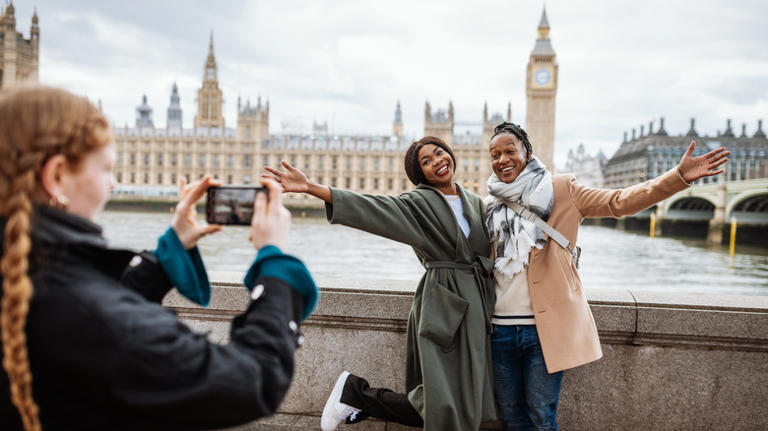
Mayor signals the end of London’s Boris Bus in new mission to clean-up the capital’s air
- Mayor of London
- Wednesday 8 May 2024 at 11:37am
Simon Harris
Political Correspondent, ITV News London

Sadiq Khan has signaled the end of the road for London’s “Boris Bus” in a new mission to clean-up the capital’s air.
The bespoke red double deckers ordered by previous mayor Boris Johnson at a cost of more than £350m have been in service less than 15 years.
But Khan, re-elected last week for a historic third term, has pledged to make London’s bus-fleet ‘zero emission’ by 2030.
The aim is to have London’s 8,600 buses powered by batteries or hydrogen.
"By 2030, all the buses in London will be zero emission," Sadiq Khan said.
"Some may need to be retro-fitted but I think all will be new buses by 2030.
"It means any bus that is not zero emission will be off our streets by 2030," he explained.
The “Boris Bus” - officially the New Bus For London, or NB4L - was commissioned by Johnson as a replacement for the iconic Routemaster.
It was designed by award-winning Thomas Heatherwick who was also responsible for the London 2012 Olympic cauldron.
The first batch of a 1,000 new buses arrived in London from a Northern Ireland factory in 2012.
Johnson described it as: “The cleanest, greenest bus on the streets of London by miles” .
But one Labour critic called it: Boris’s white elephant” and the buses soon ran into trouble after passengers complained of stifling heat during a London summer.
They had to be retrofitted with opening windows. The conductors were later withdrawn to save money.
The original Routemaster double decker, with its open platform and conductor, was introduced by London Transport in 1954.
But the buses were retired in 2005 after more than 50 years when London’s first mayor, Ken Livingstone, ordered a fleet of bendy buses.
Want a quick and expert briefing on the biggest news stories? Listen to our latest podcasts to find out What You Need To Know…

IMAGES
VIDEO
COMMENTS
Using buses in London. We have put together the following tips to help you have the best experience when travelling by bus. Buses are an easy and affordable way to travel around London, with 95% of Londoners living within 400 meters of a bus stop and our Hopper fare giving you unlimited journeys within one hour of touching in for just £1.75.
Parts of south London, from Wimbledon through Croydon to Beckenham and New Addington, are served by London Trams.. Pick up a one-day bus and tram pass and you can travel on the Transport for London bus and tram network for £5.90 no matter how many bus or tram journeys you take.The single day actually lasts until 4.29am the following day to cover any late-night journeys.
The bus driver will assist you in boarding the bus safely if needed. Avoid peak hours, if possible: Peak hours on London buses can be extremely crowded and uncomfortable. If your schedule allows, try to avoid traveling during these times (usually from 6:30 am to 9:30 am and 4:00 pm to 7:00 pm on weekdays).
From how to use the bus to London bus routes and fares, read on to learn more about them. Contents. 1 How to Pay for Buses in London. 1.1 Bus & Tram Pass; 1.2 Oyster Card; ... £1.65 London single bus fare (Unlimited travel within one hour of use) 5 to 10 years old: FREE travel on buses and trams. A 5-10 Zip Oyster photocard is not needed.
Routes and Hours: There are over 600 total bus routes around London, with many serving central London.Bus routes that run 24 hours are indicated by a "Night Bus" sign. Determining the best bus can be complicated, especially when looking at a route map, so use Citymapper or TfL's "Plan a Journey" to help decide which is best for your travels.; Fares: The London bus is a cheaper option than the ...
4: Tap In & Boarding. Board the bus in the front next to the driver and tap in to pay. In London, you need to use a contactless card, Oyster Card, or a digital wallet like Apple Pay to tap in. Tapping in is your London bus ticket; there is no physical ticket and you cannot pay cash.
For tube, bus and rail journeys within the city we recommend you purchase an Oyster card, available online or at any rail or tube ticket office. Pay a small deposit, choose the amount you want to put on your card and then simply touch in and touch out as you travel around London. When you leave, return the card to a ticket office for your ...
Hopper Fare. The London bus Hopper Fare is automatically applied to your journey if you qualify, and to qualify, you need to tap in on another bus (or buses) within 1 hour of tapping in on the first one. The Hopper Fare means that you still only pay £1.65 total, no matter how many buses you take within a one hour period.
For example, if you spend two hours on buses in the morning, one in the afternoon, and one in the evening, pricing will be capped once you reach £5.25. The weekly cap is £24.70, so if you plan to be there for 5, 6, or 7 days, a Week Bus Pass that gets loaded on your Oyster card might be a good option.
Getting around London. Find out how to travel around the capital with this guide to public transport in London. Learn about using the Tube, Santander Cycles, London bus routes, London taxis, London river bus services and more.
There is a daily cap of £5.25 for bus-only travel 9 (if you use another transport method e.g. the tube in the same day your cap will be higher). Children aged 5-10 travel for free on London buses. If you're moving to London with kids aged 11-15, then we'd recommend you apply to get a Zip Card for them which gives them free travel on buses ...
Travel by bus to London: A sustainable journey. Traveling by coach to London is a sustainable choice. Buses in the UK are more sustainable than single-occupancy vehicles. Buses transport more people at a go, meaning the carbon emissions per trip per passenger are significantly lower. Most companies, including FlixBus, have invested in newer bus ...
The Overground is a great way to travel, and mostly covers zone 2 and beyond. You can travel east to west or north to south easily without having to go through central London or taking suburban railways - great for getting to places like Kew Gardens.. It's a bit less frequent than the tube, but you get views of the city, air-conditioning and wider trains.
Based on customers travel reviews, travelers who booked on Wanderu rave about traveling to London by bus with National Express giving them a 4.6 rating out of 5. Travelers also mentioned that National Express had the most comfortable bus service to London taking into account the seats and amenities that National Express offers.
Weekly bus pass 2024. If you are visiting London for 5, 6 or 7 days and only use buses, a one-week bus pass costs £24.70. The pass entitles you to unlimited travel on buses all over London within zones 1-6. The pass can start on any day of the week and is valid for travel at any time within the dates specified.
For travel in zone 1-2: Single tickets on the underground cost £2.80 with an Oyster card/contactless card. If you buy a ticket from a ticket machine, the full cash fare is £6.70. If you use your card to pay for transport in central London for the whole day, the 'daily cap' - the maximum amount deducted is £8.50.
Cost and duration: The open top bus tour London costs £29 for adults and £14 for children, and a family ticket option is available for £76. The tour can take between 90 minutes and two hours (subject to traffic on the day). Book the open-top bus tour with live guide now.
The Best London Bus Routes for Sightseeing. 1. Bus Route Number 11: Tamed Fulham to Buzzing Liverpool Street. Click for the latest bus timetable. Bus 11 has gained a reputation for being the closest you can get to a sightseeing tour, all for the price of £1.75. So I checked in out.
BlaBlaCar app is the simplest way to book bus tickets to London. All your rides and tickets in one place, up-to-date info and exclusive mobile-only features. Book your bus ticket for London on BlaBlaCar.com ↔ 1 hold baggage item ↔ 2 hand luggages included. Exchange and refund possible in a few clicks.
First Great Western Service operates a train from Paddington to Oxford hourly. Tickets cost £30 - £70 and the journey takes 54 min. Chiltern Railways also services this route hourly. Alternatively, Stagecoach Oxfordshire operates a bus from Marble Arch to Queens Lane every 20 minutes. Tickets cost £12 - £18 and the journey takes 1h 39m.
Double-decker London buses offer spectacular city views, with many routes passing right by London's landmark attractions. One of our faves is the historic Routemaster Bus 15, which we suggest ...
Sadiq Khan has signaled the end of the road for London's "Boris Bus" in a new mission to clean-up the capital's air. The bespoke red double deckers ordered by previous mayor Boris Johnson ...